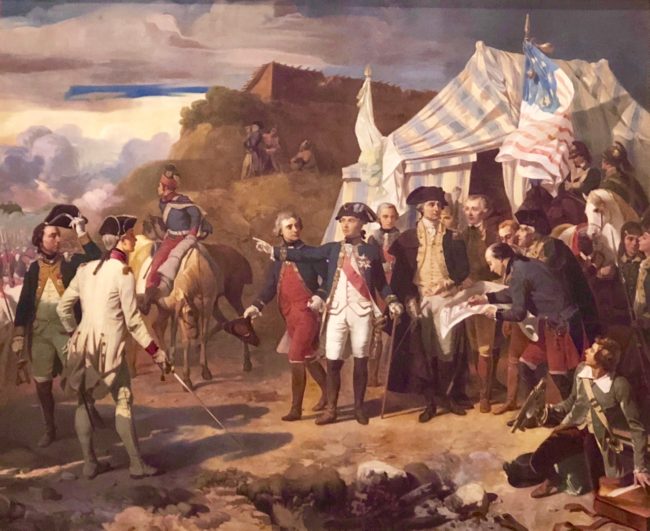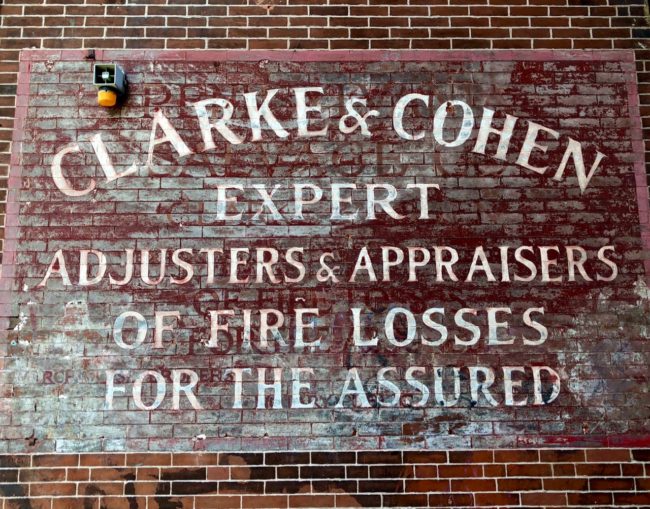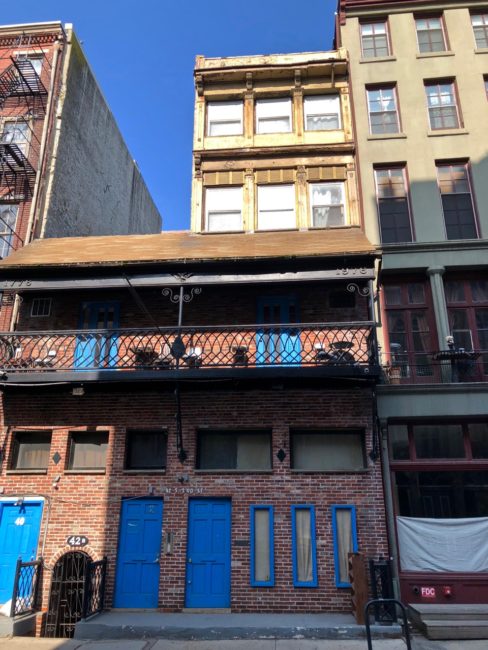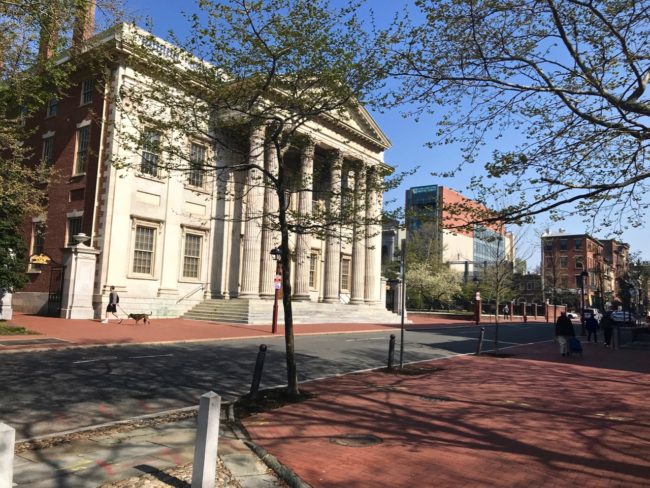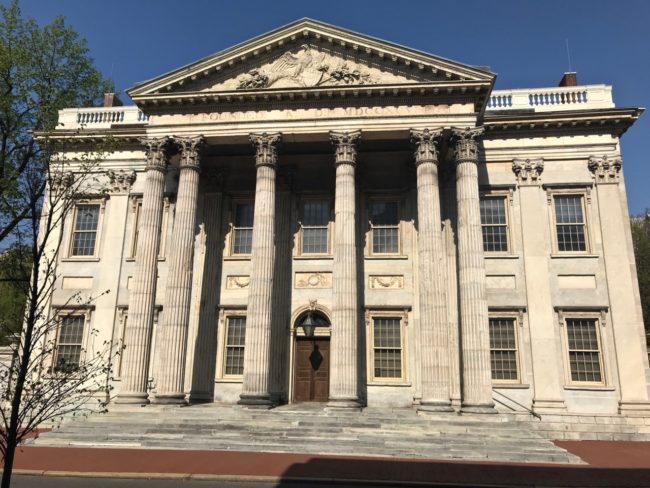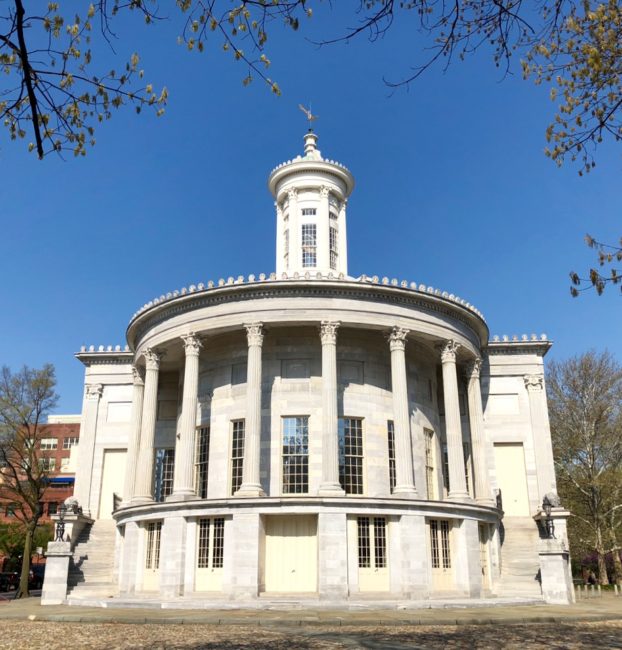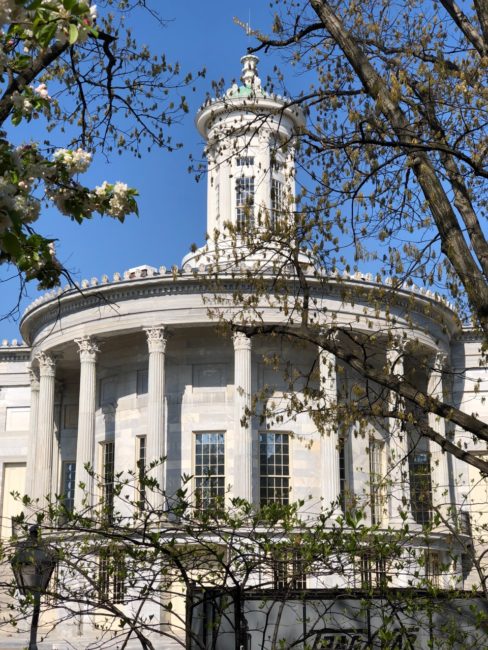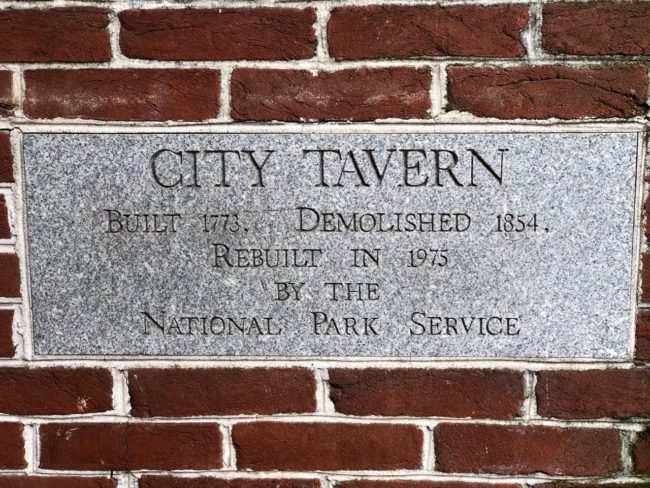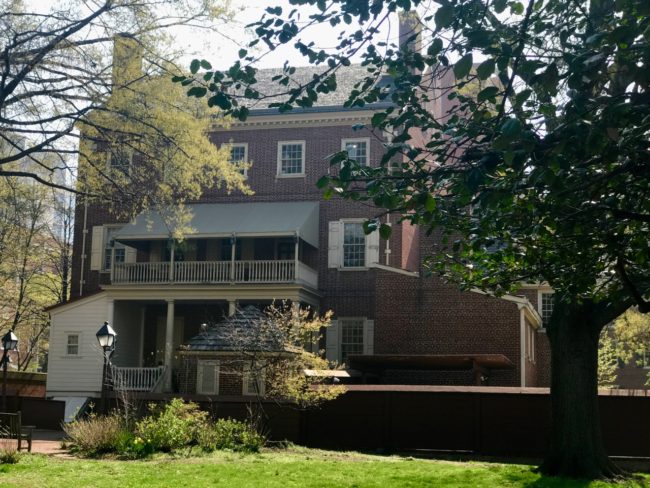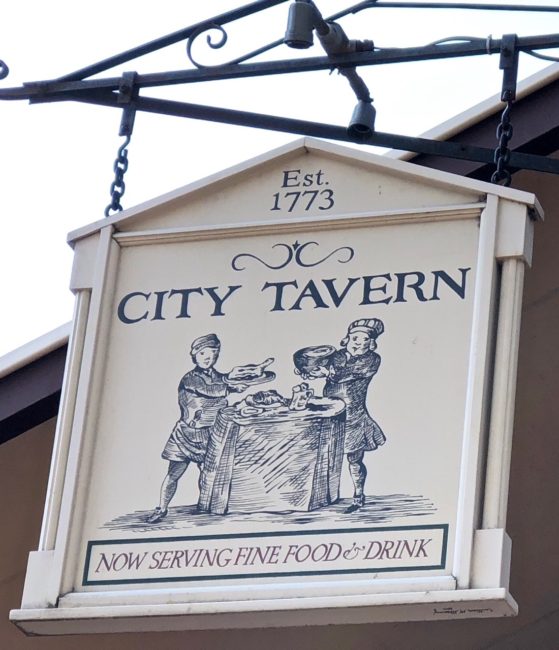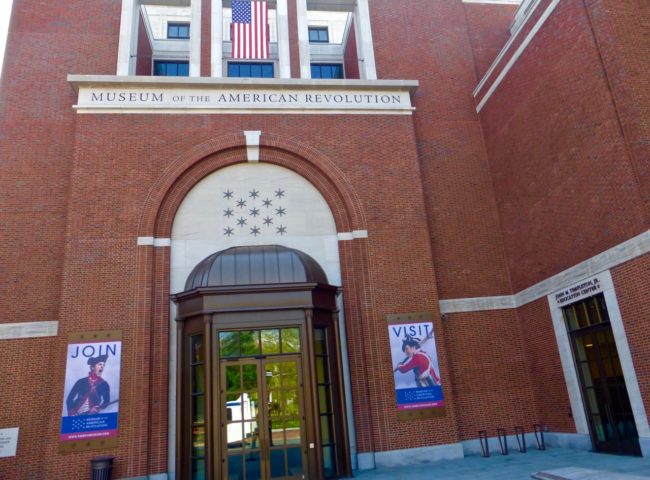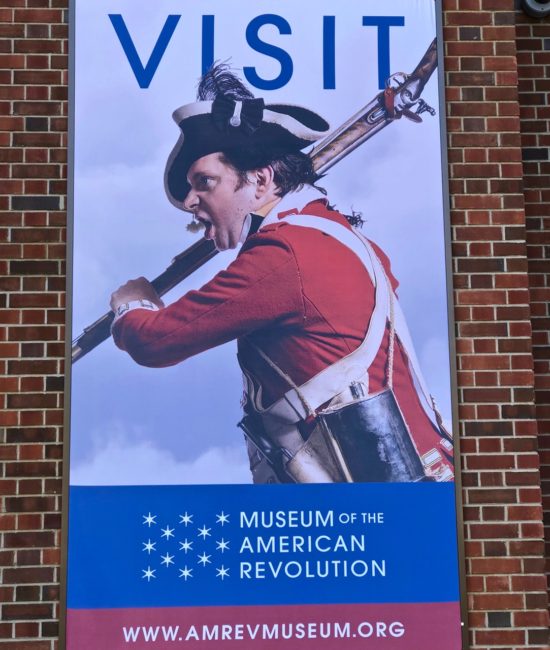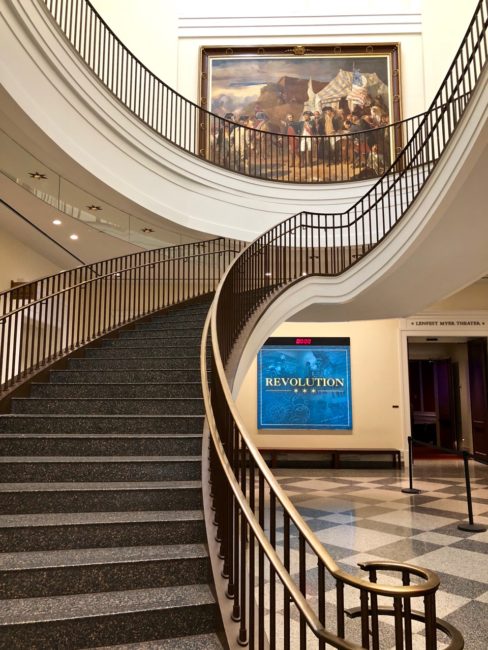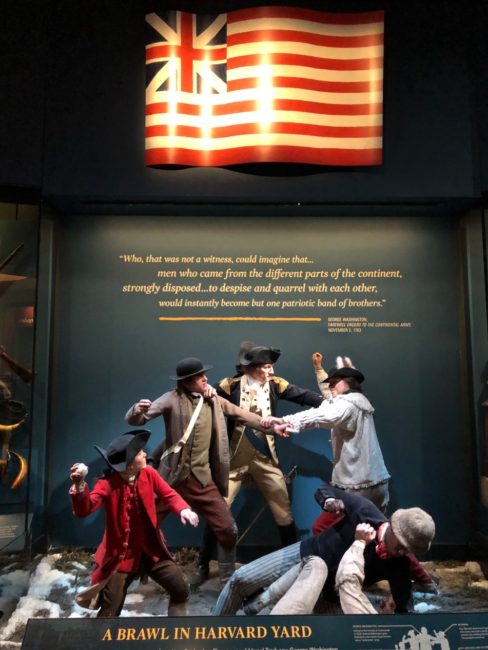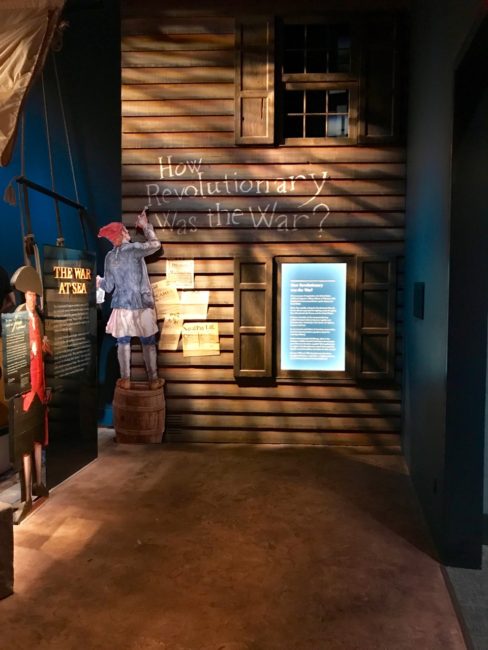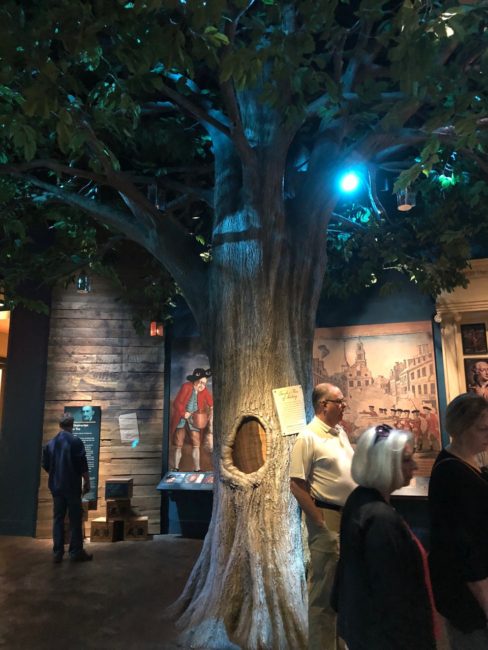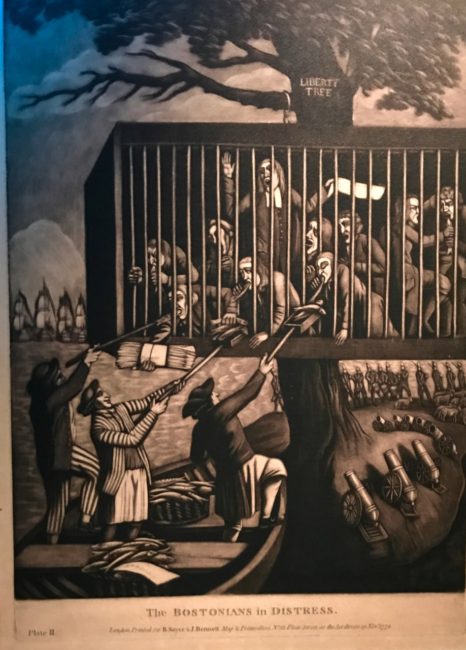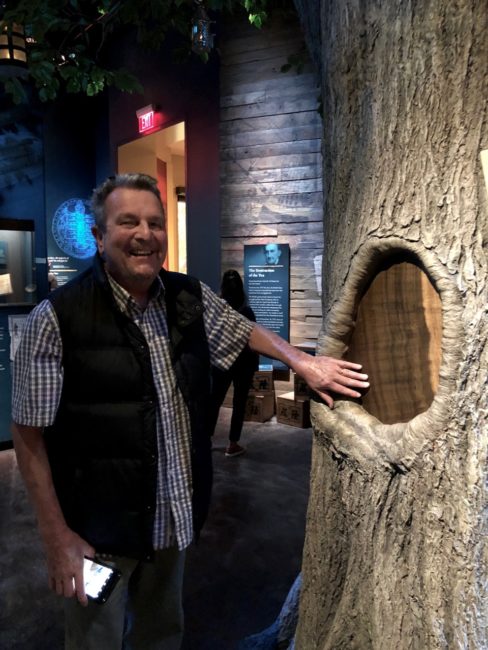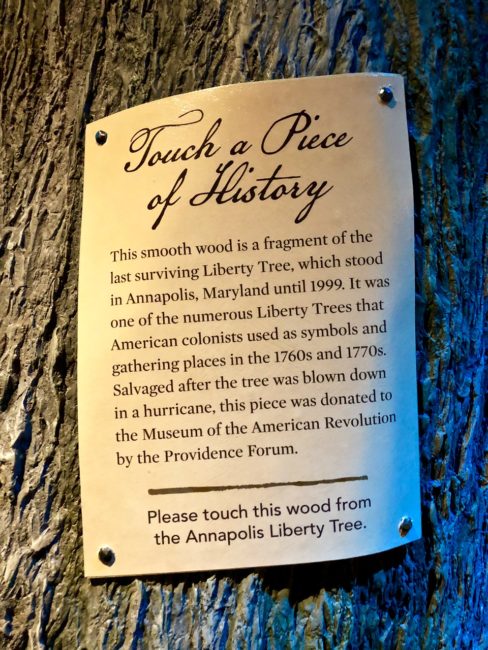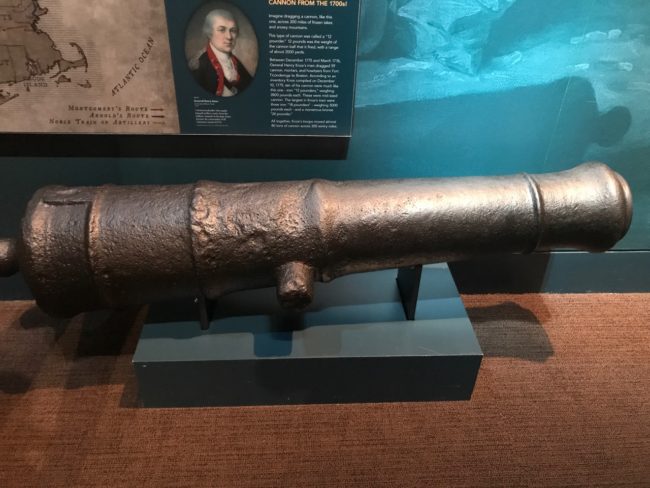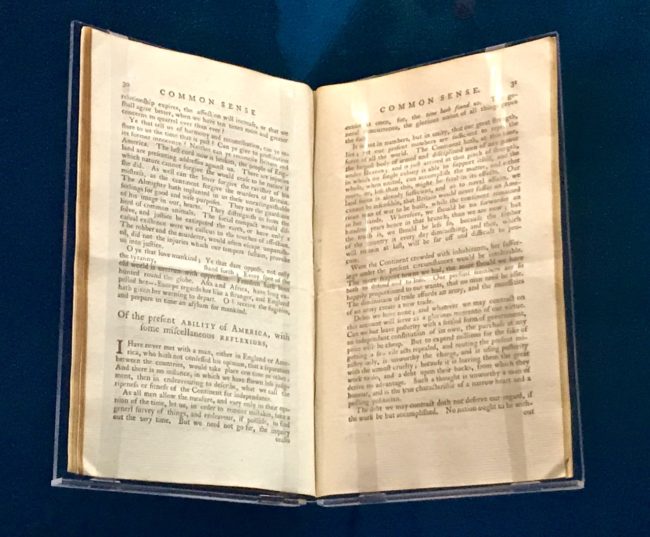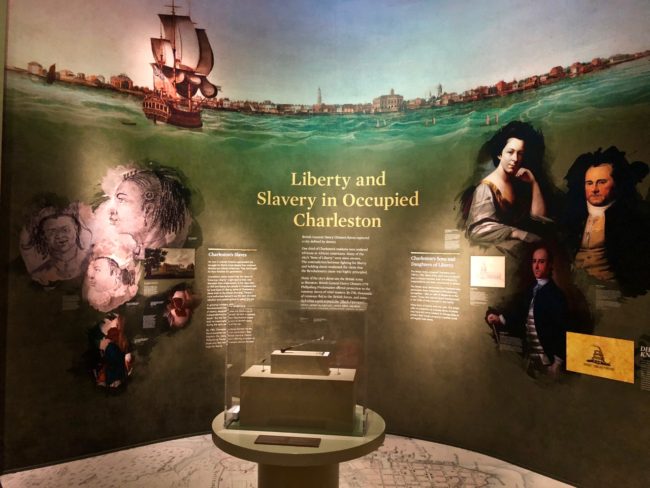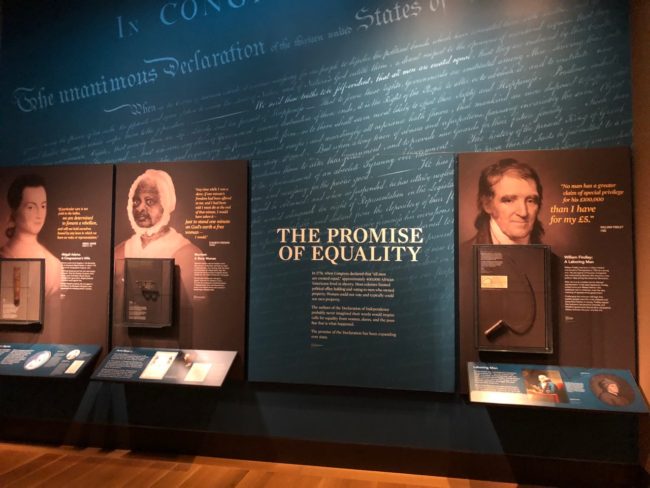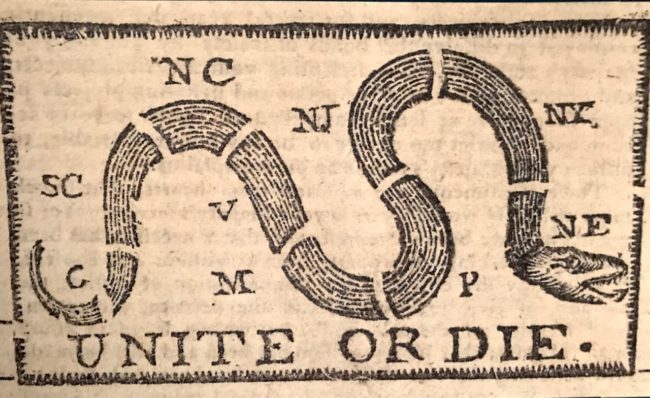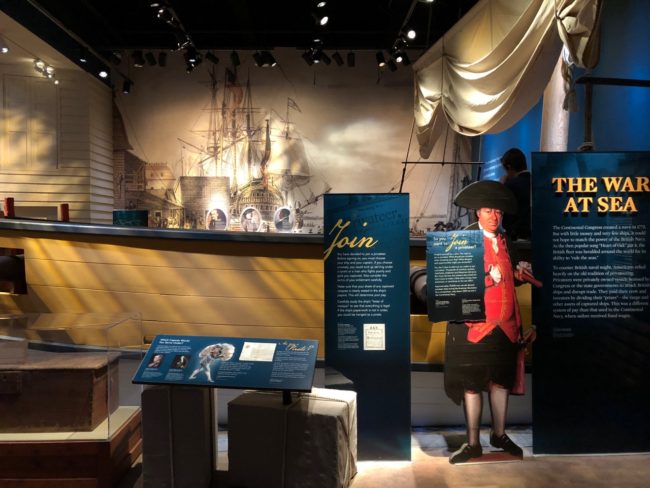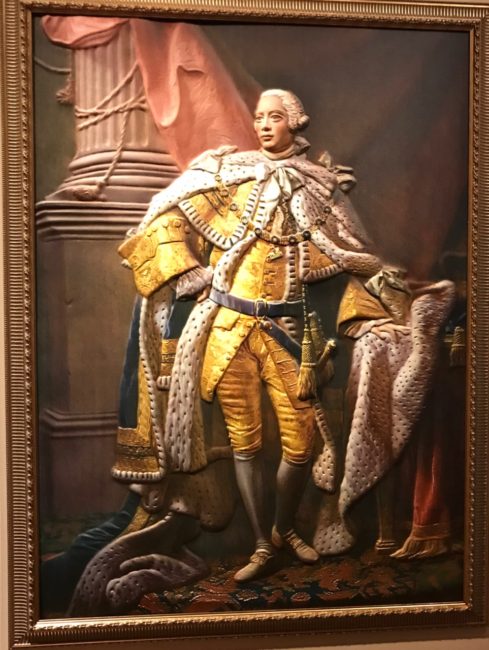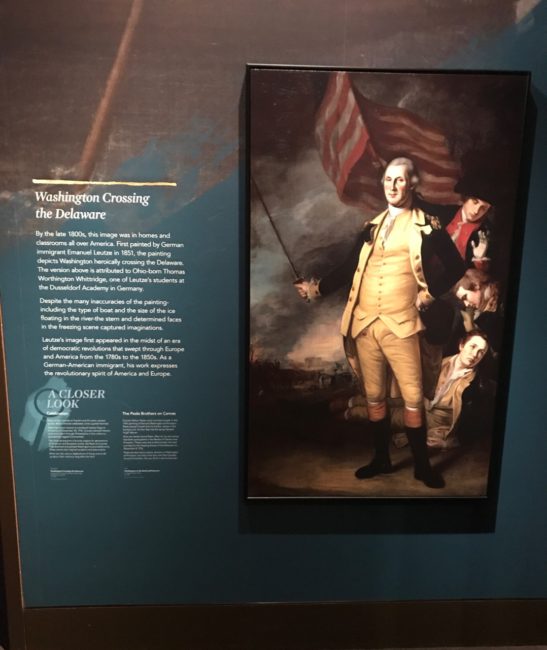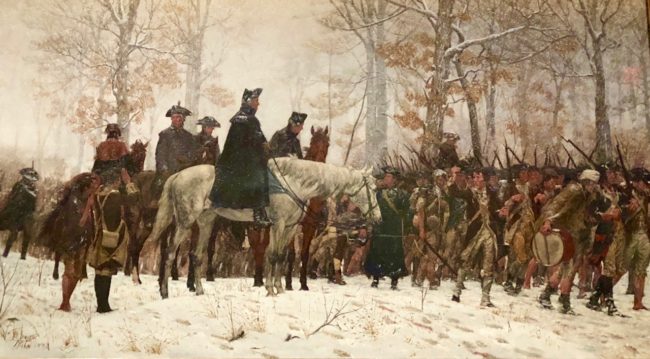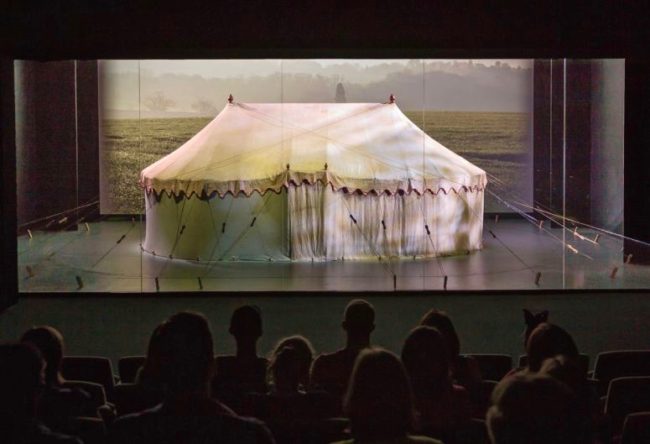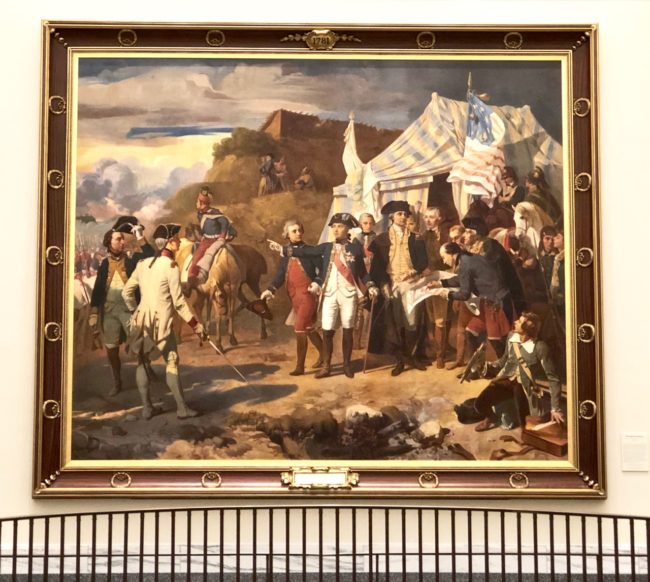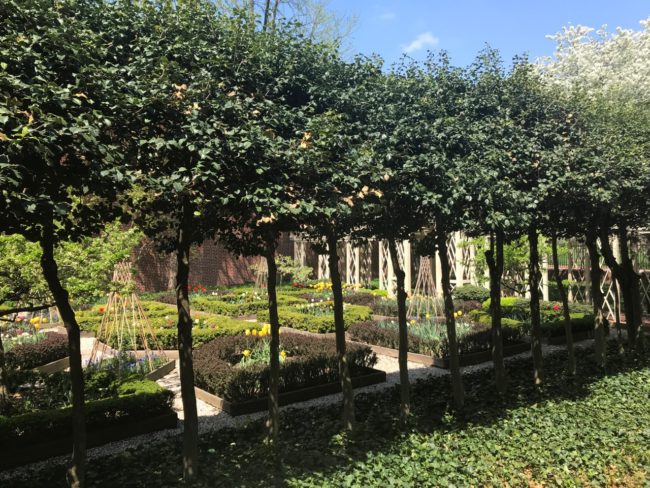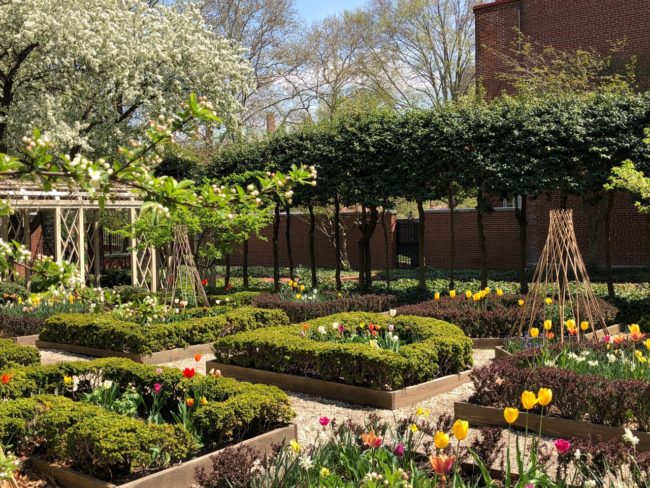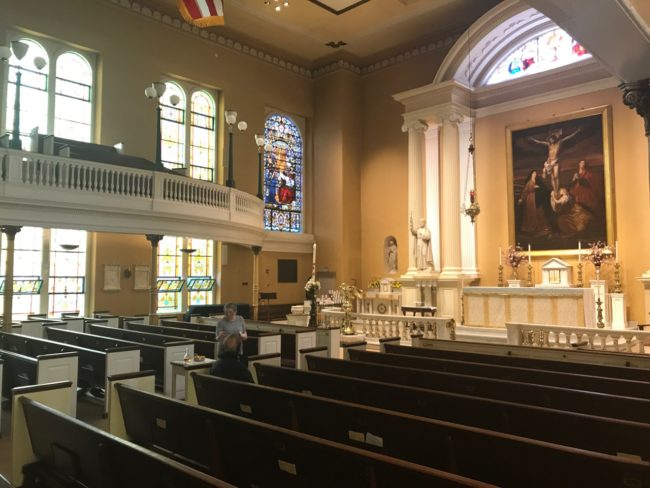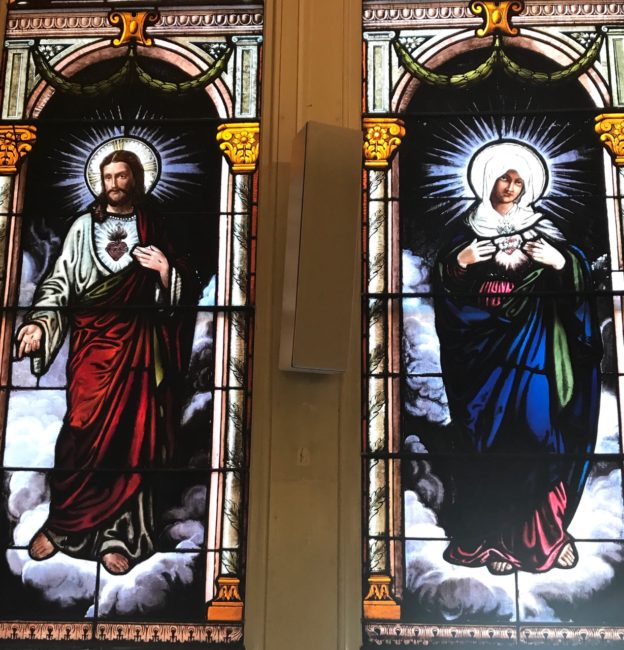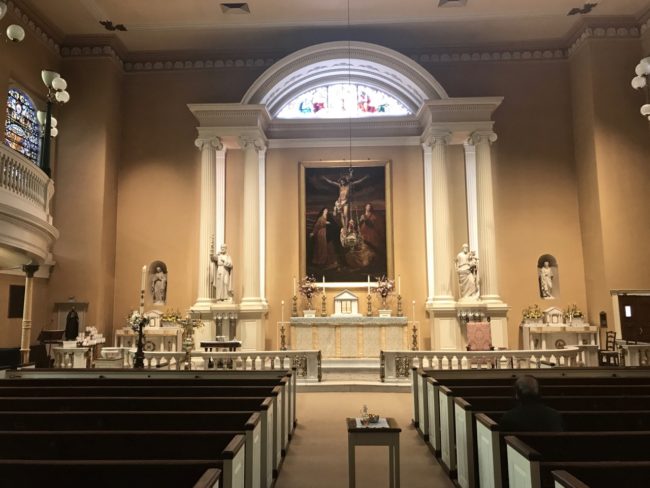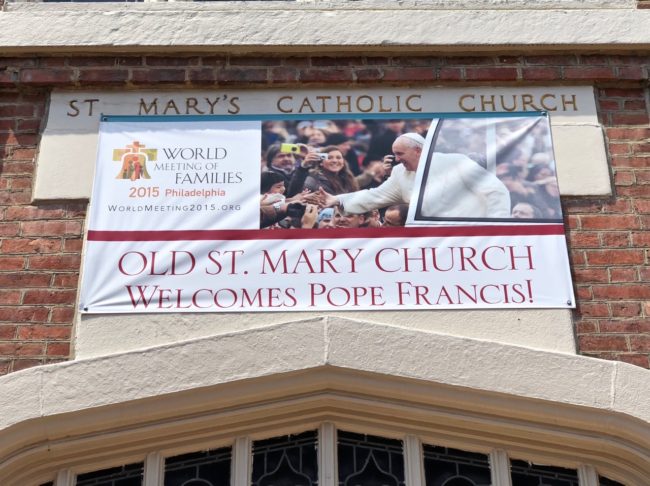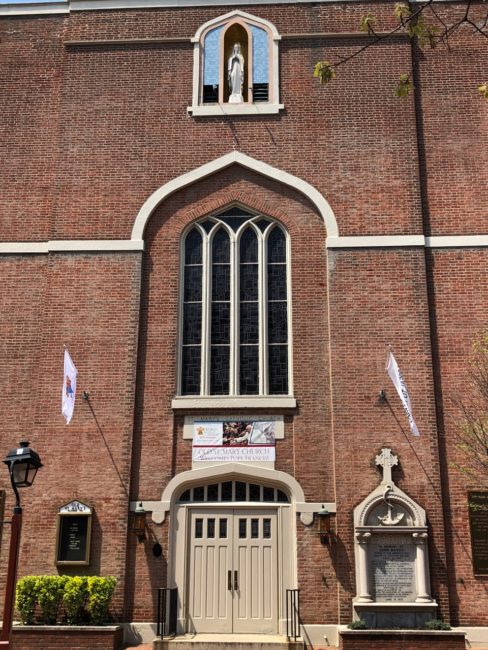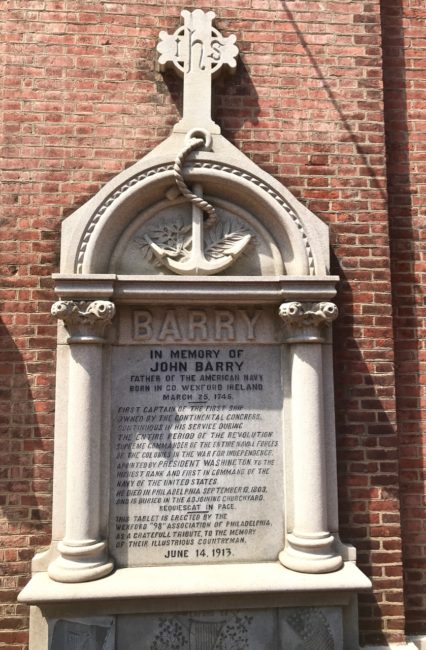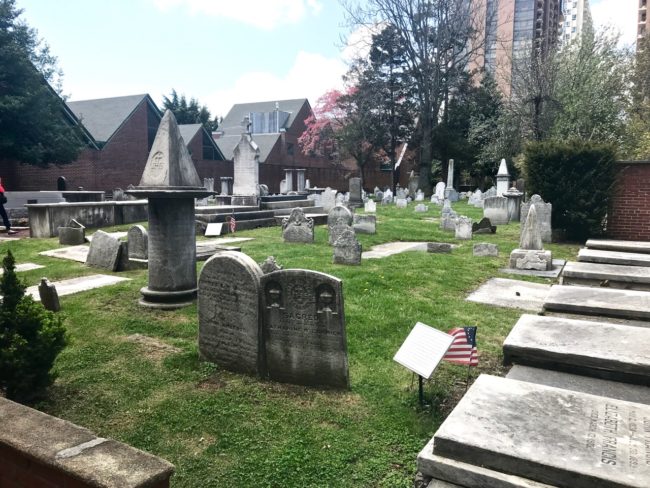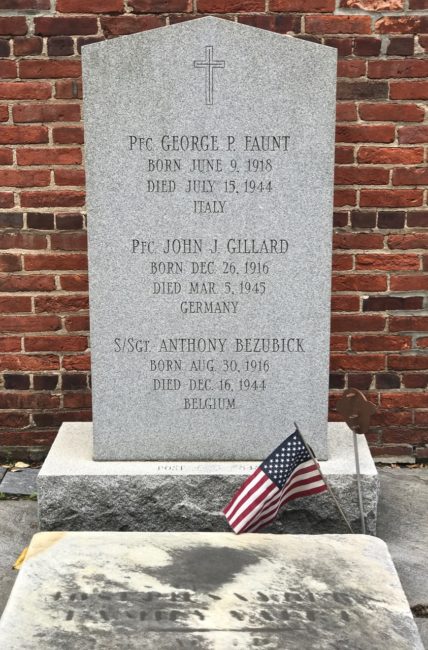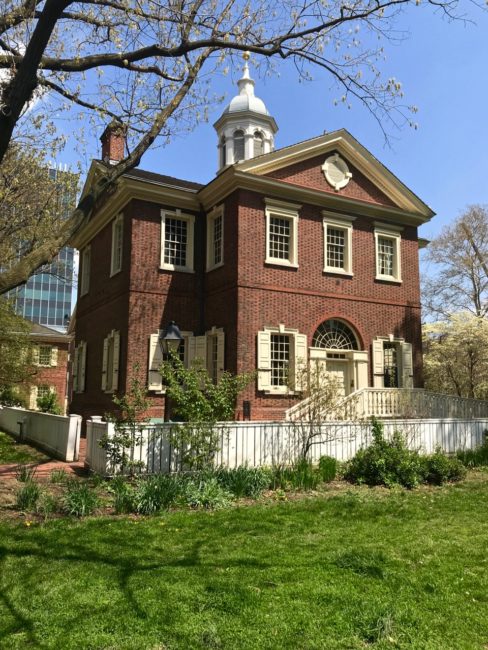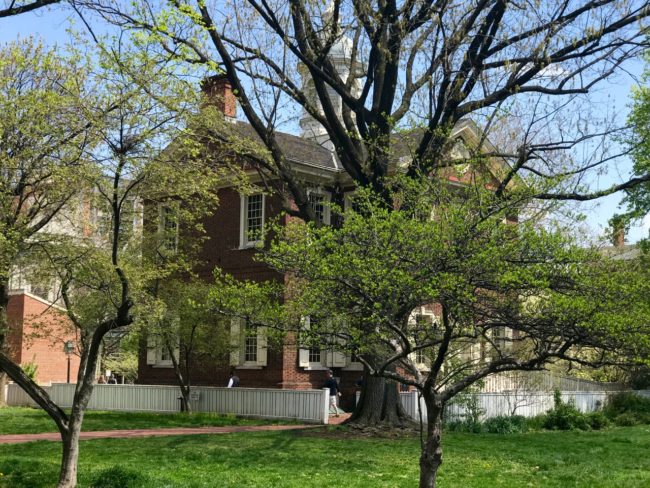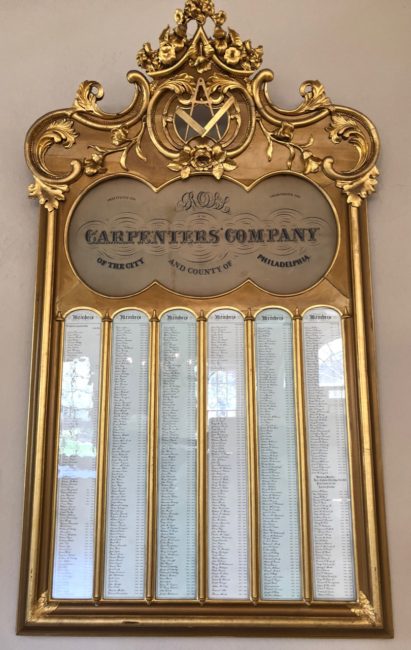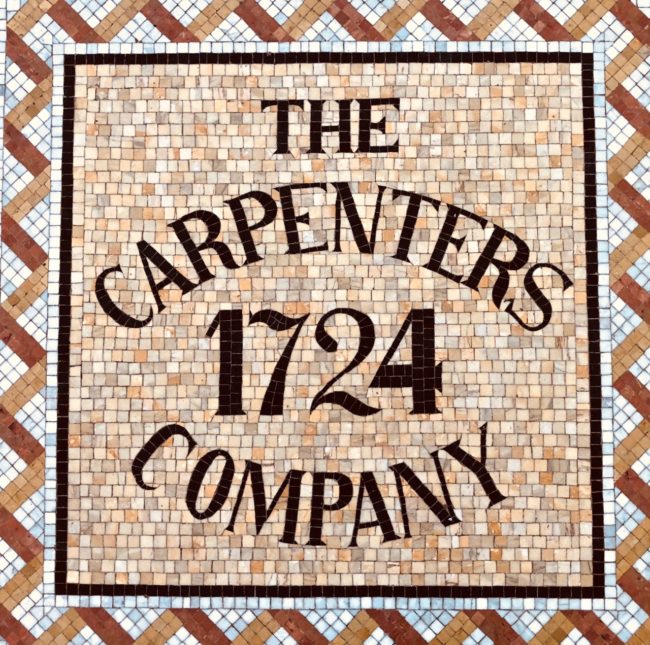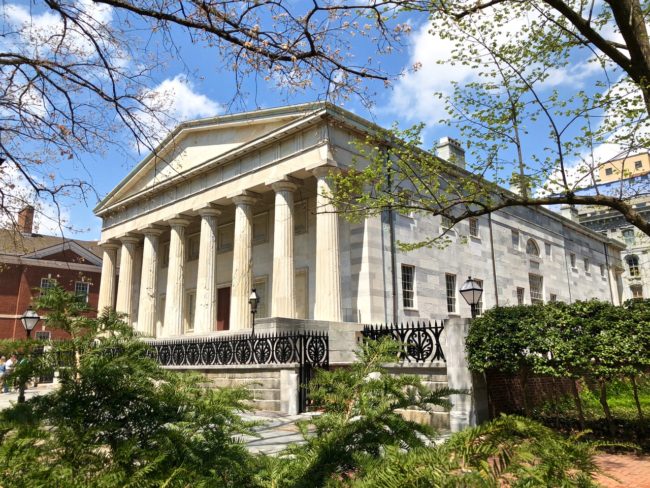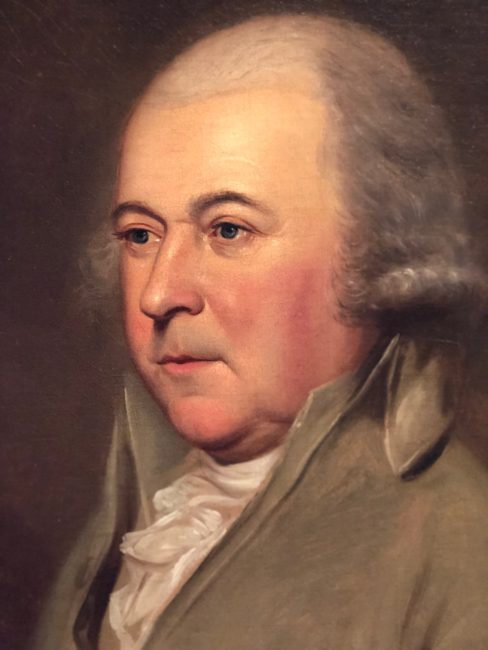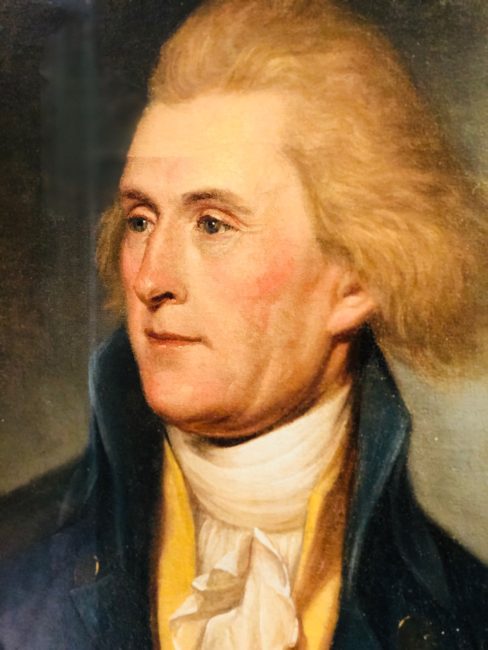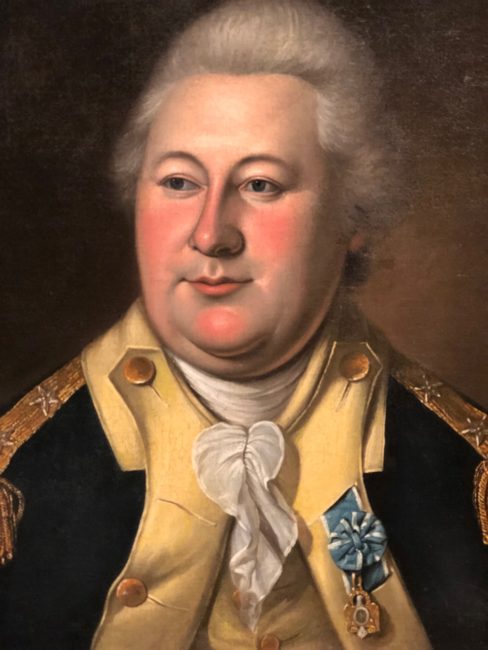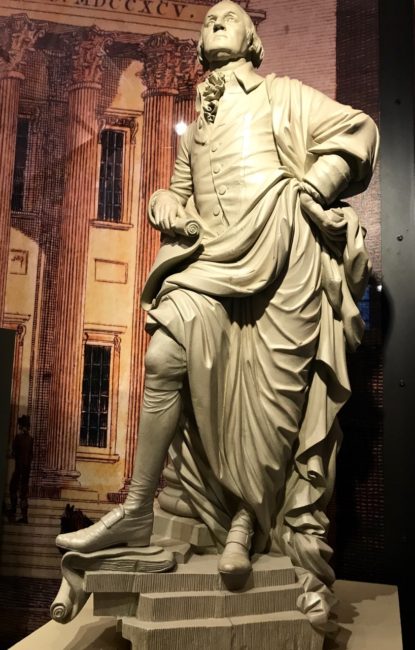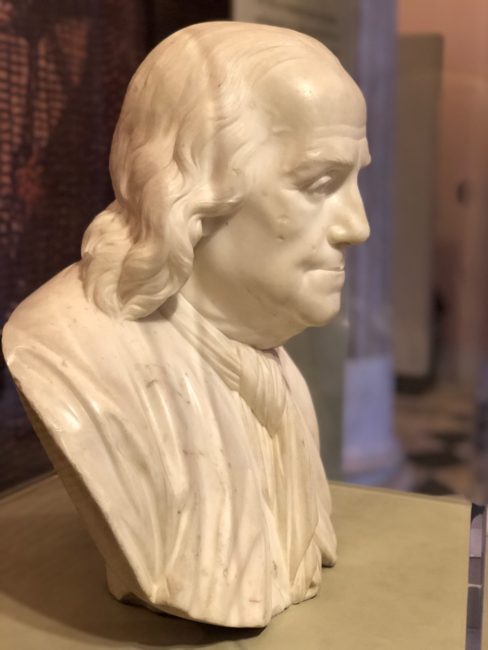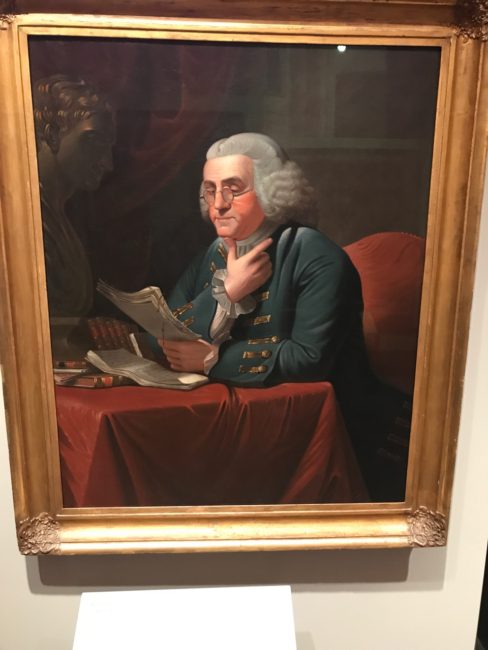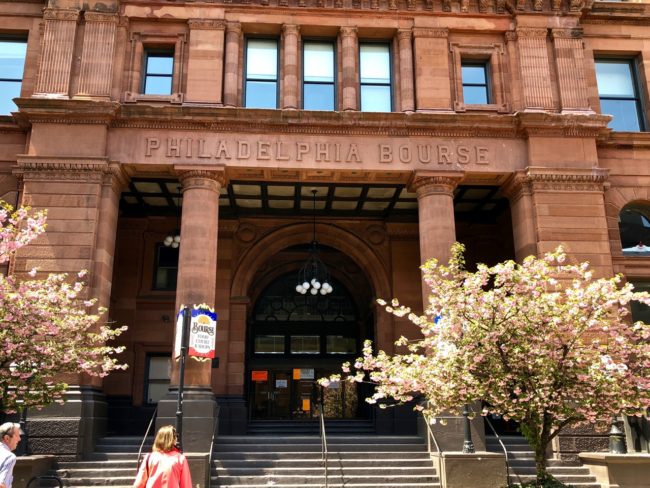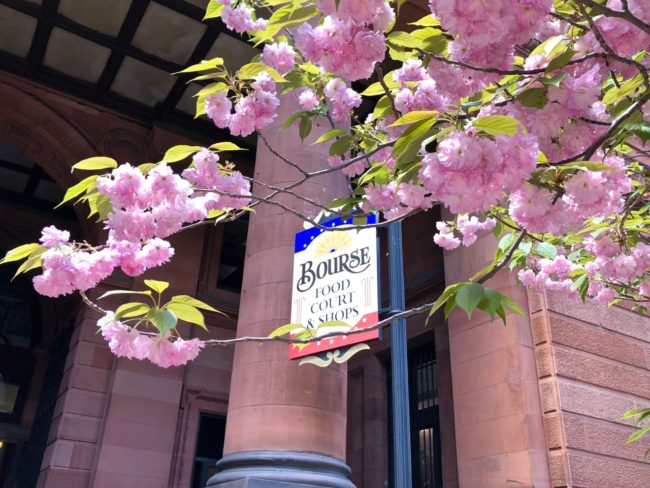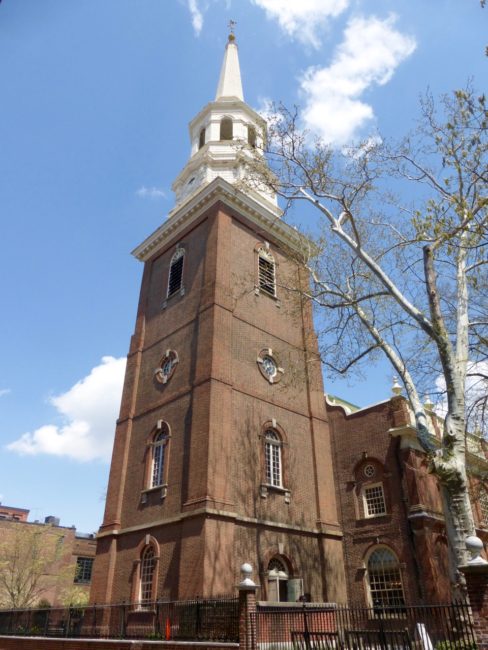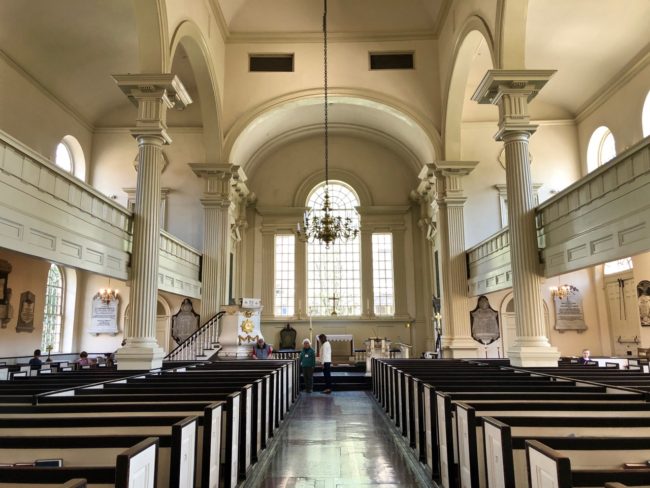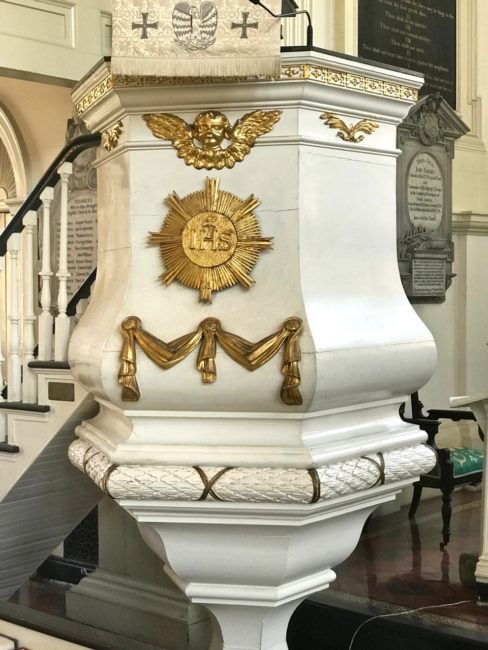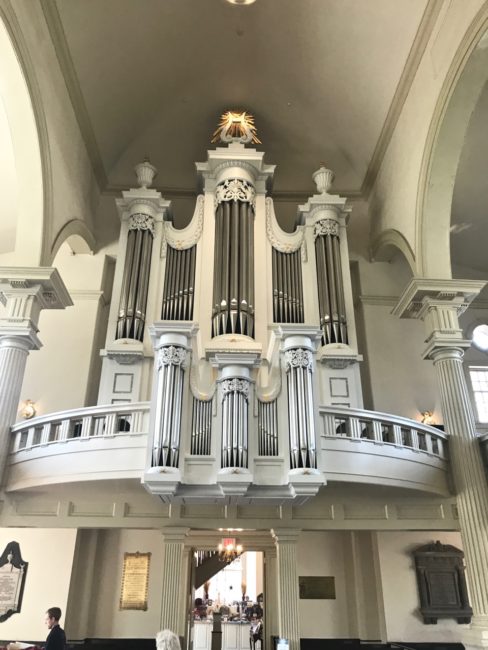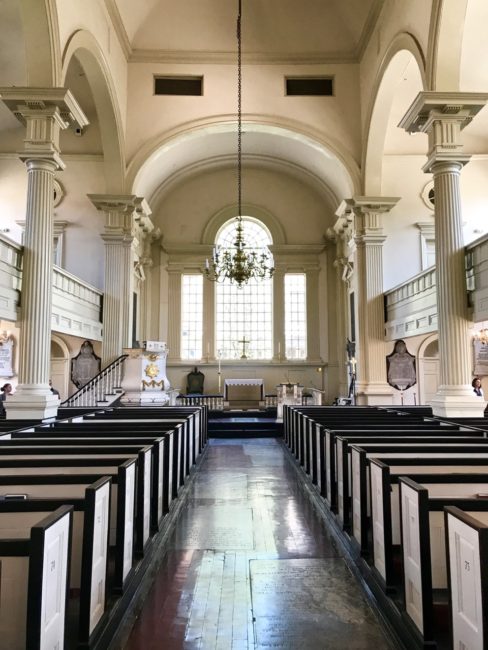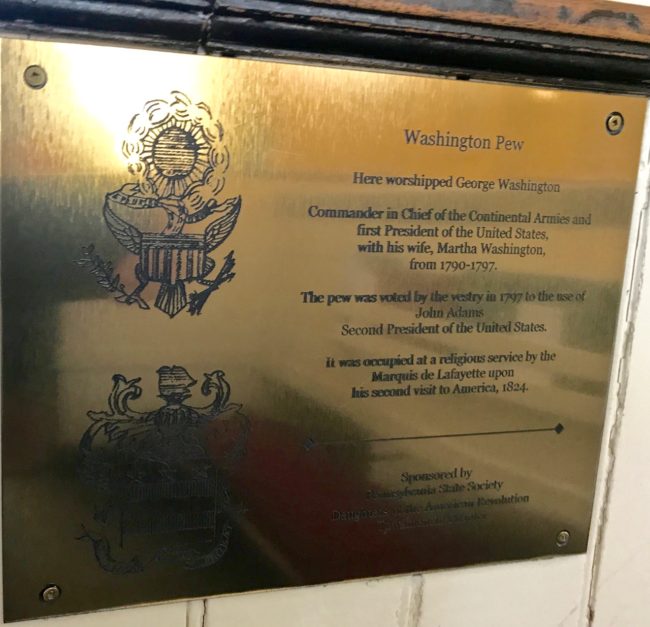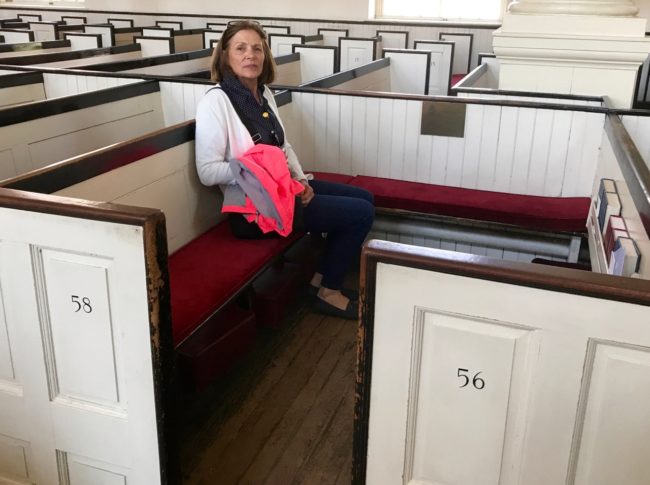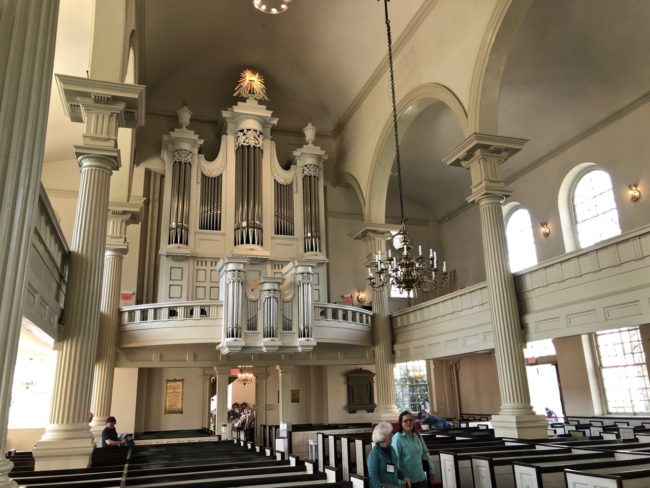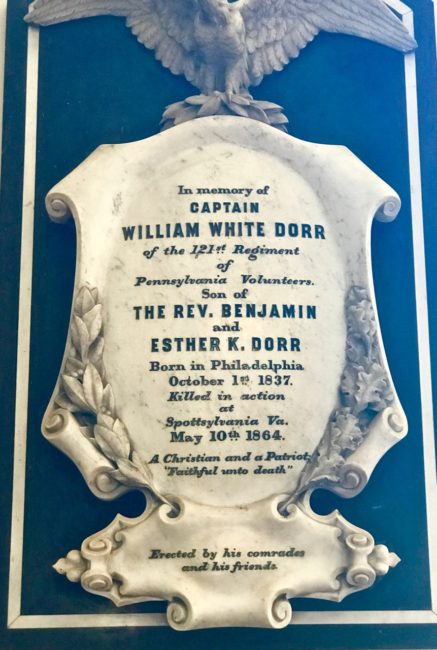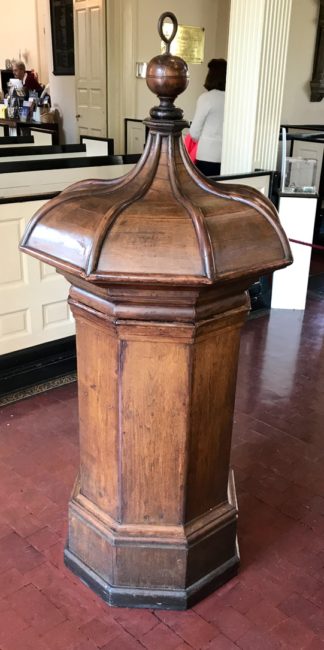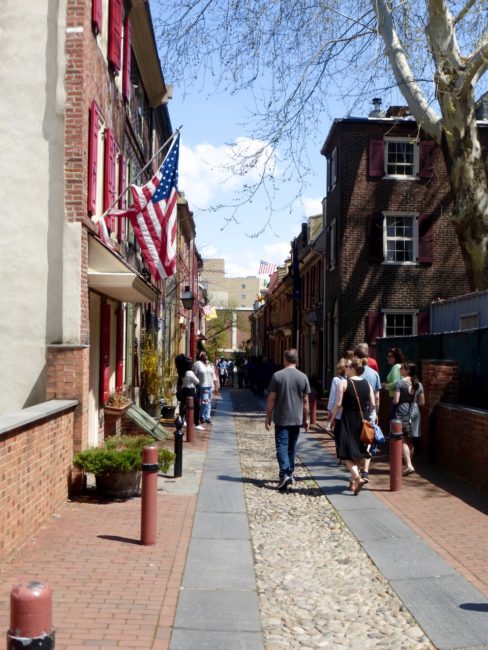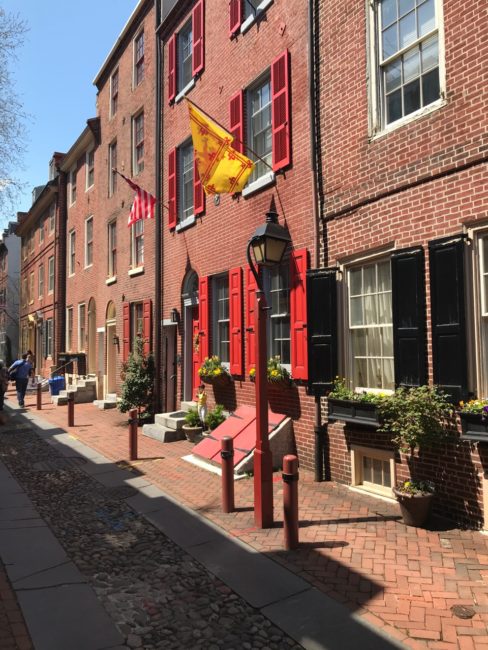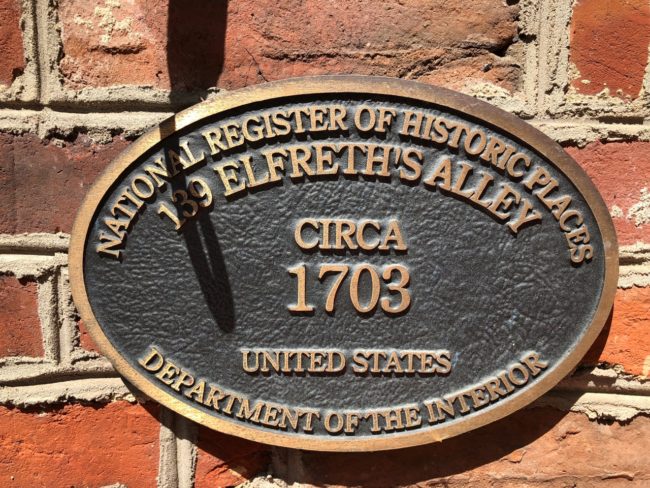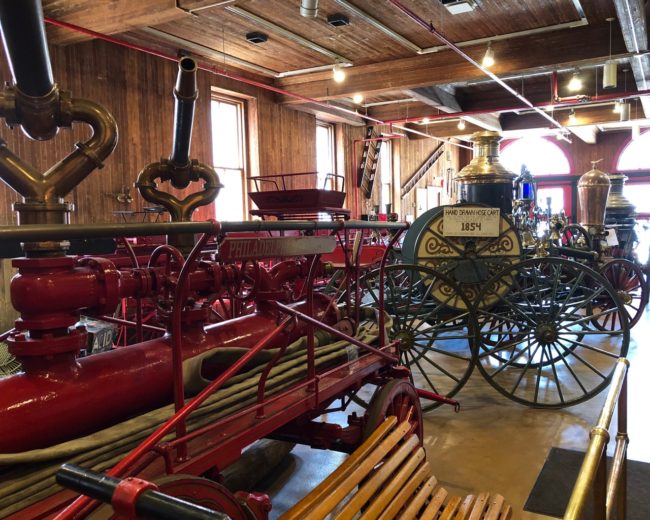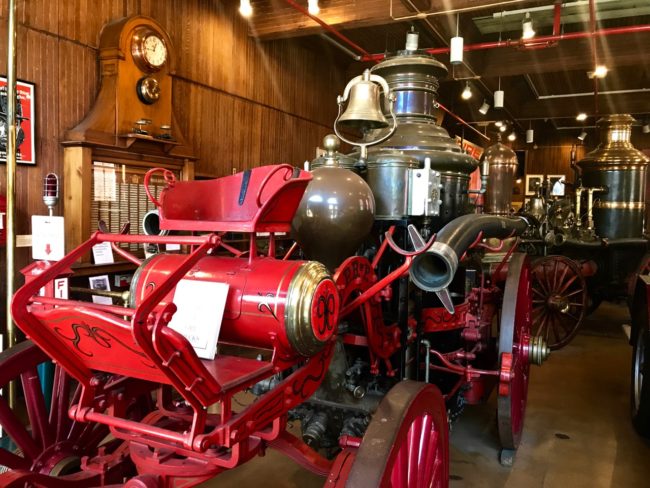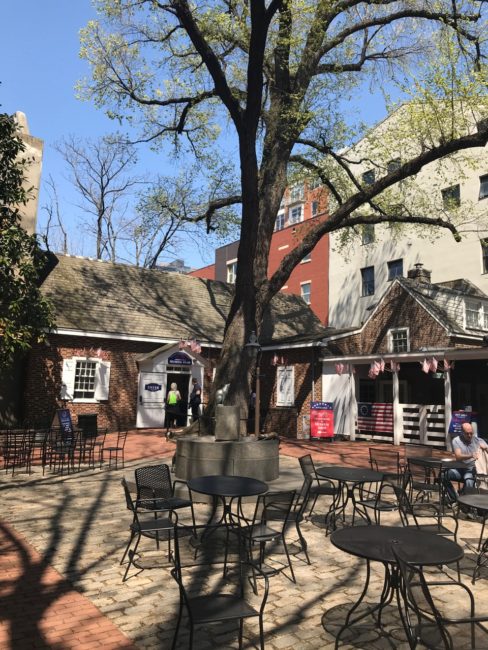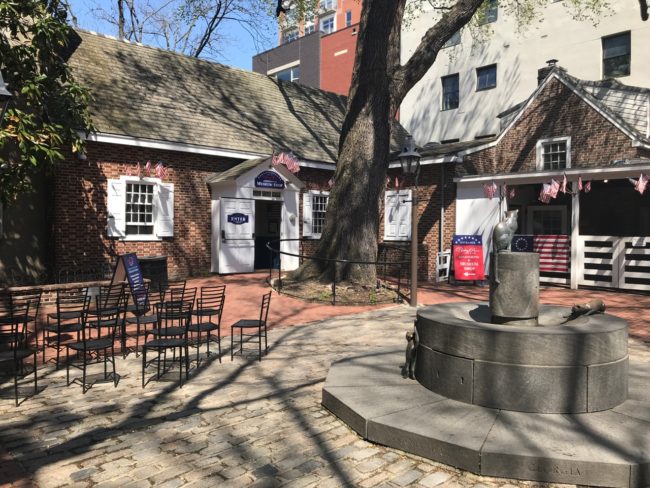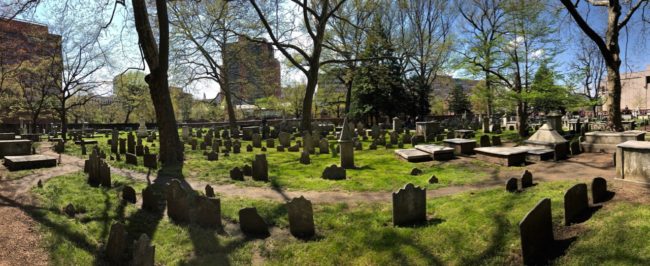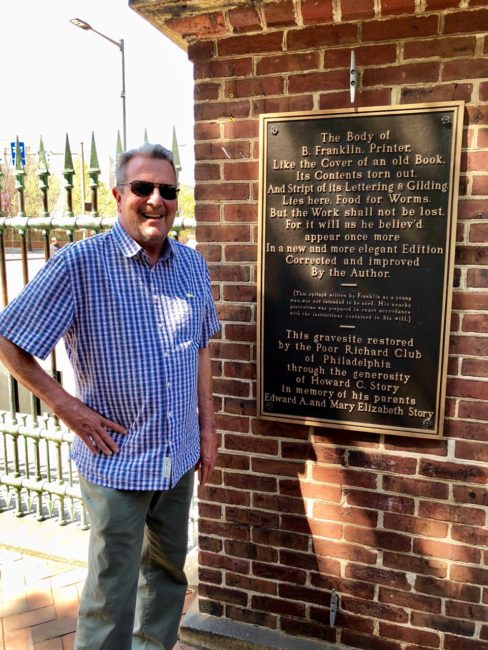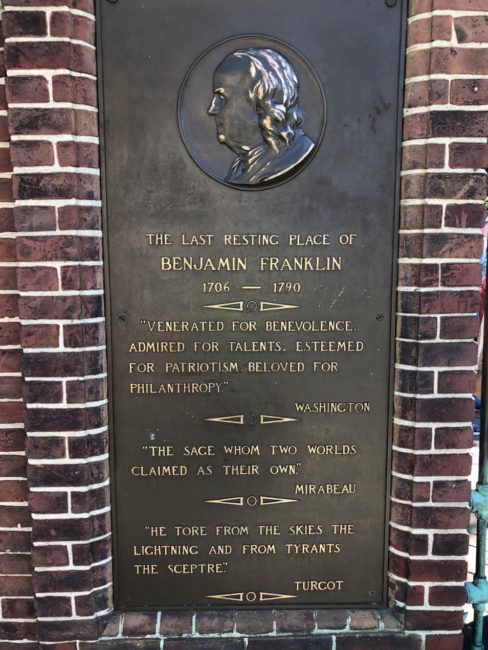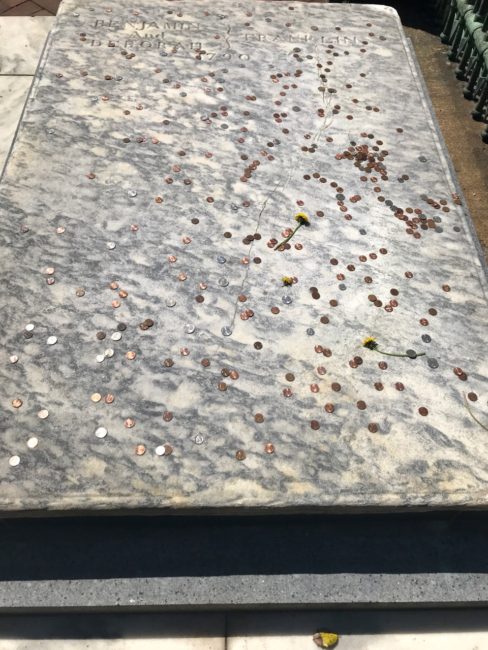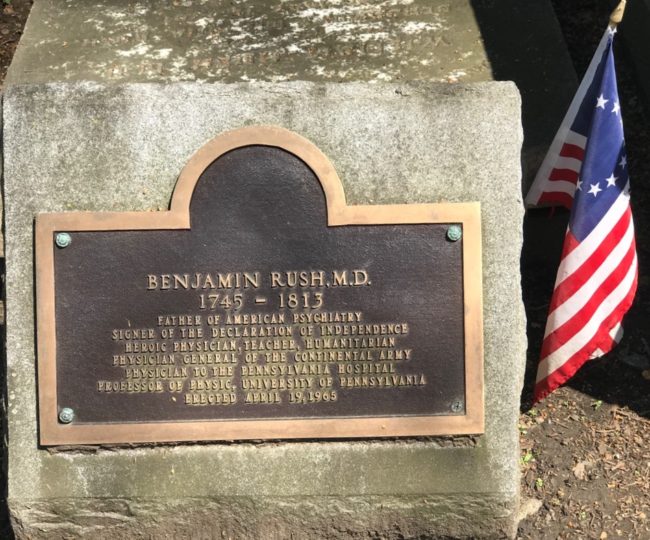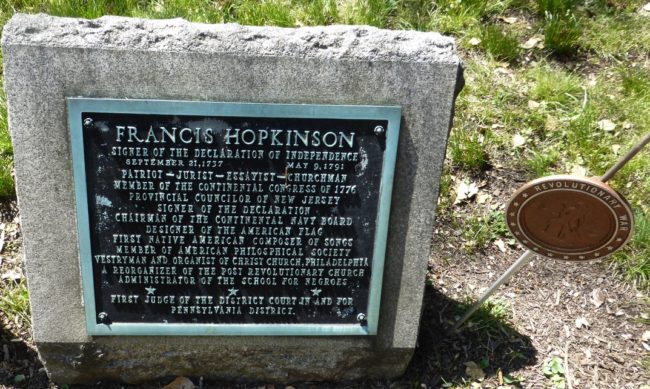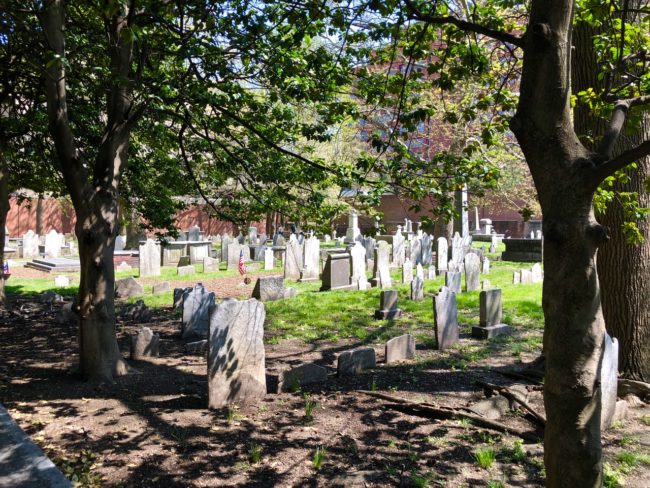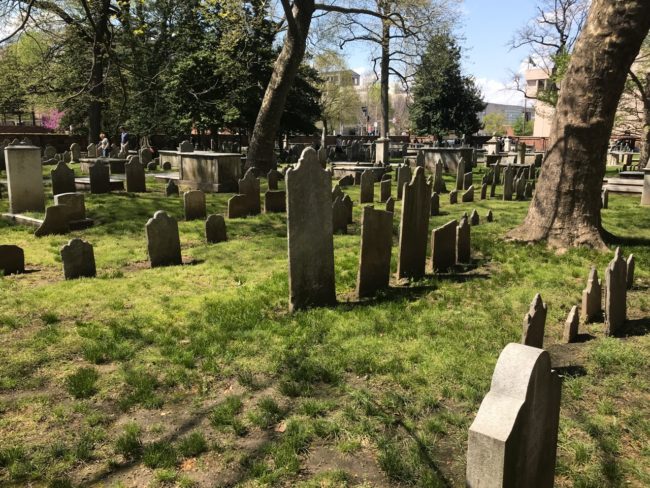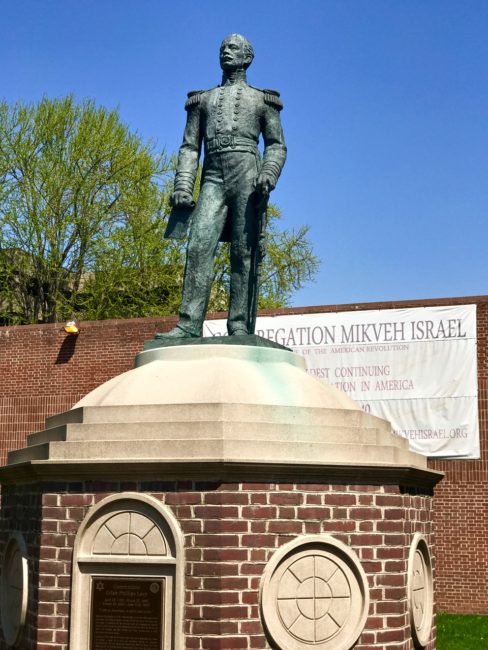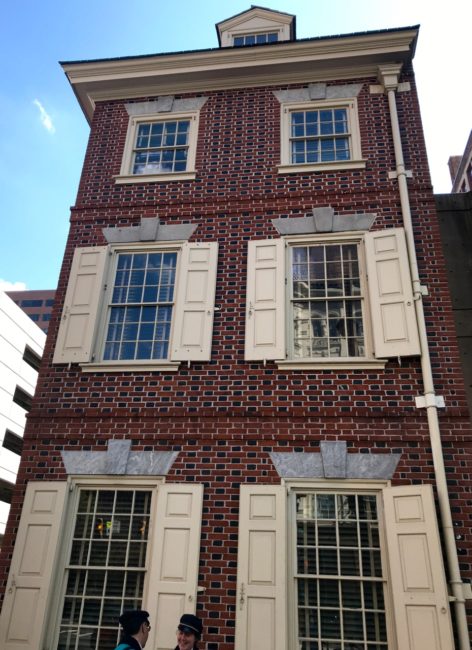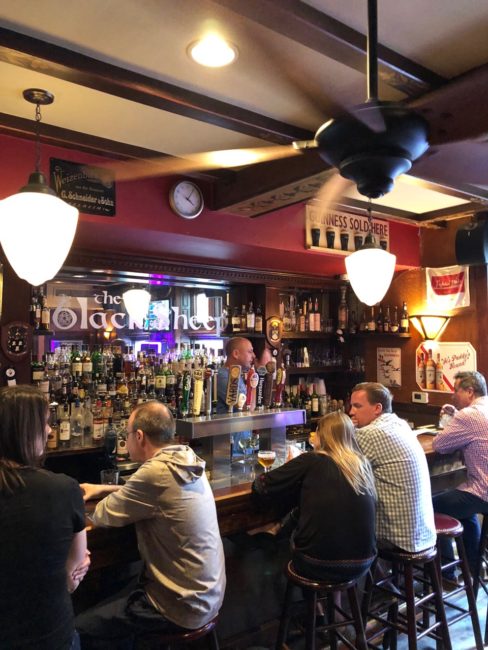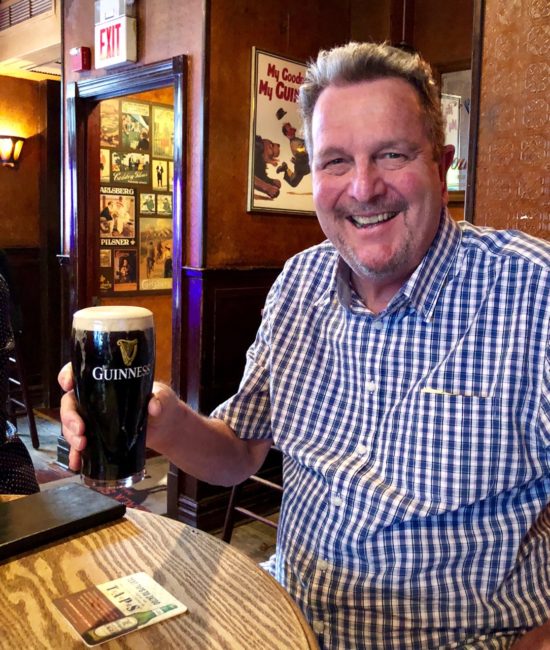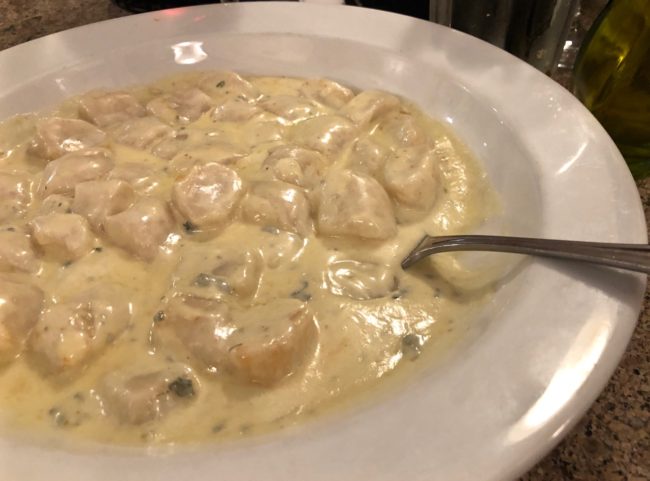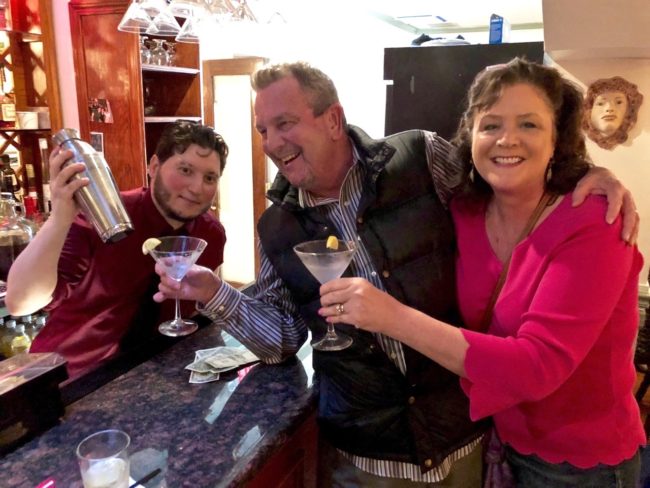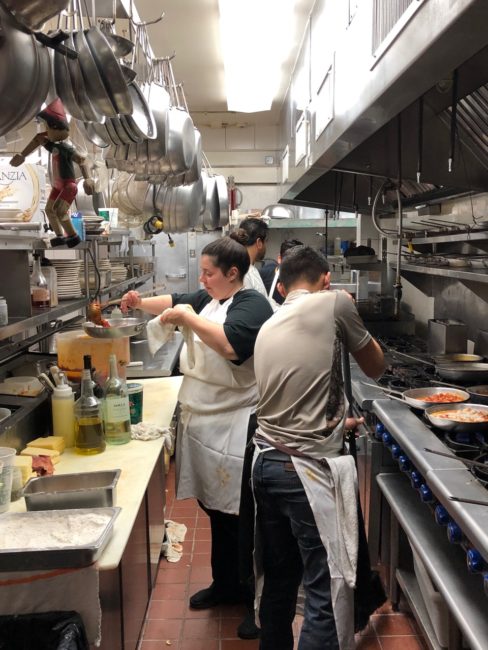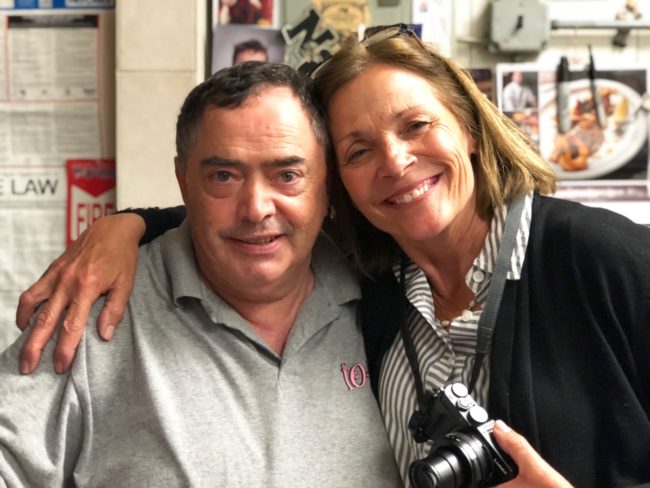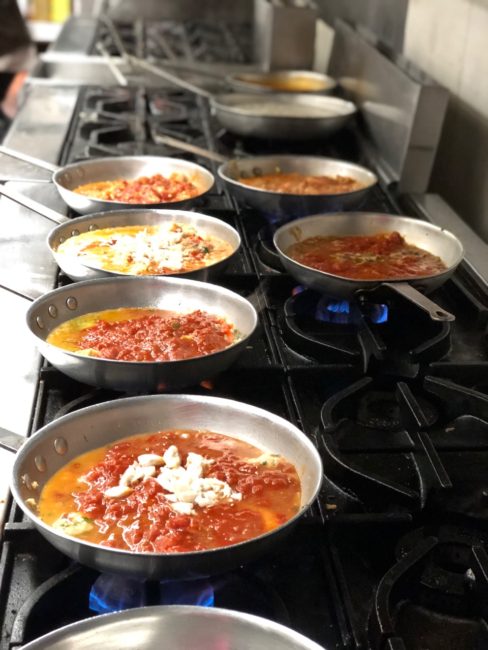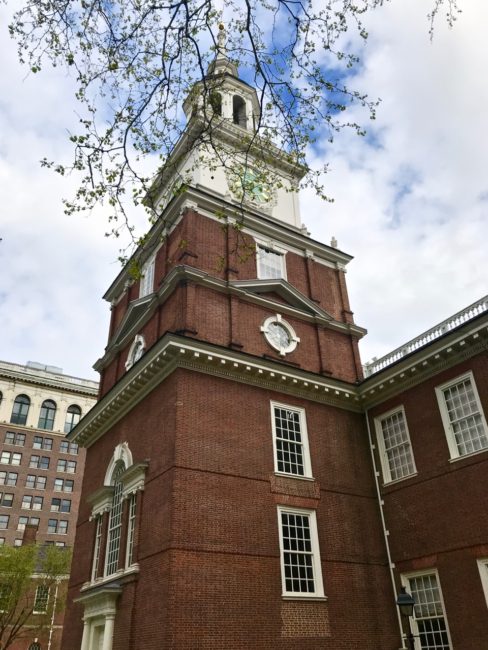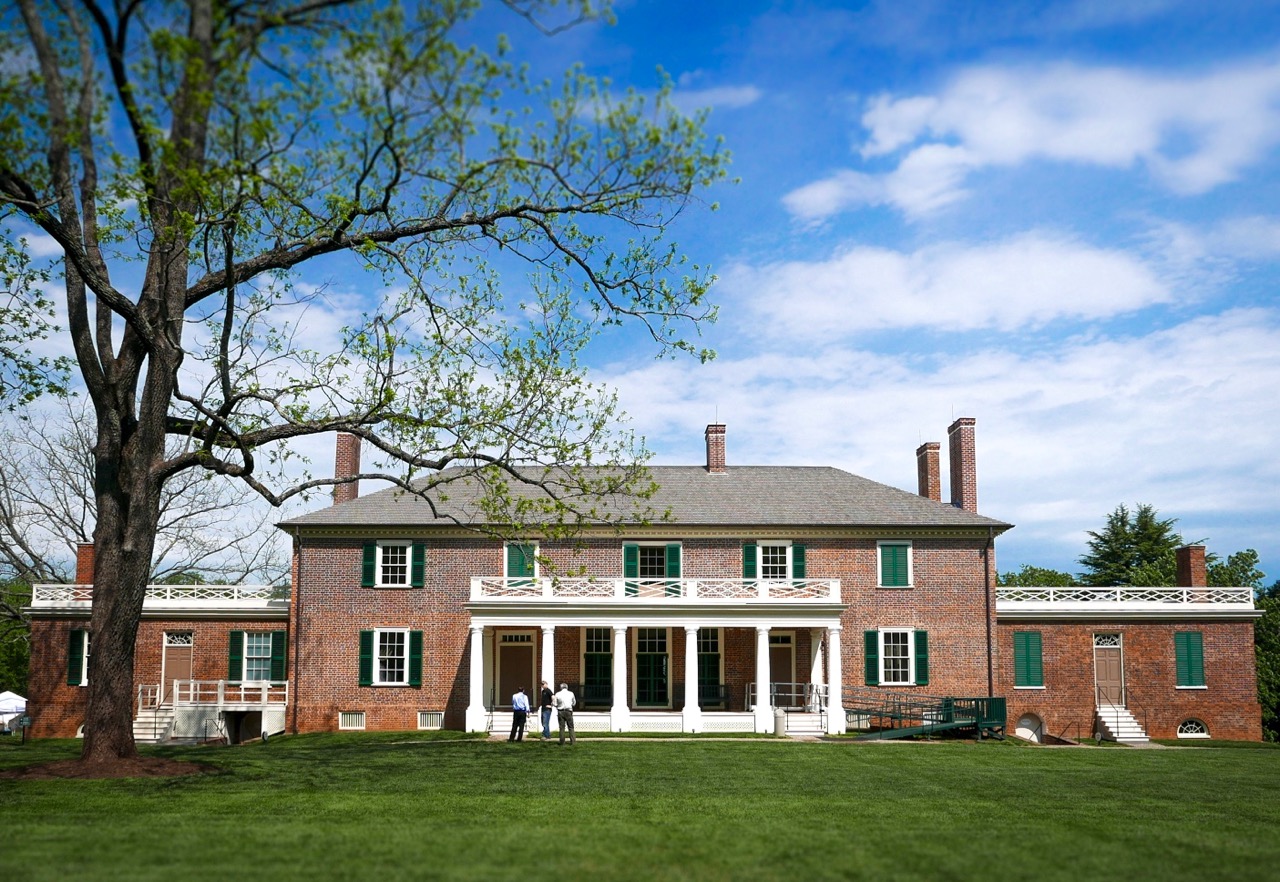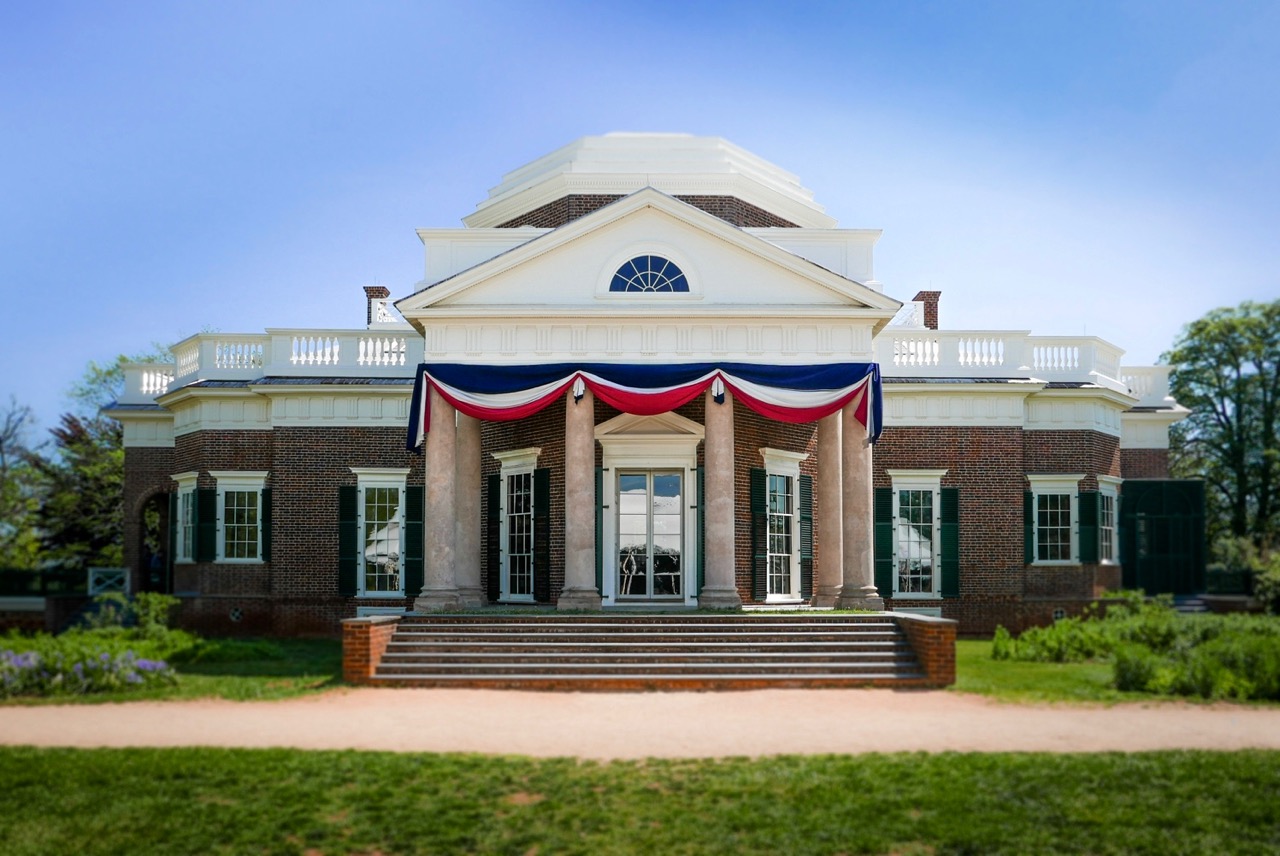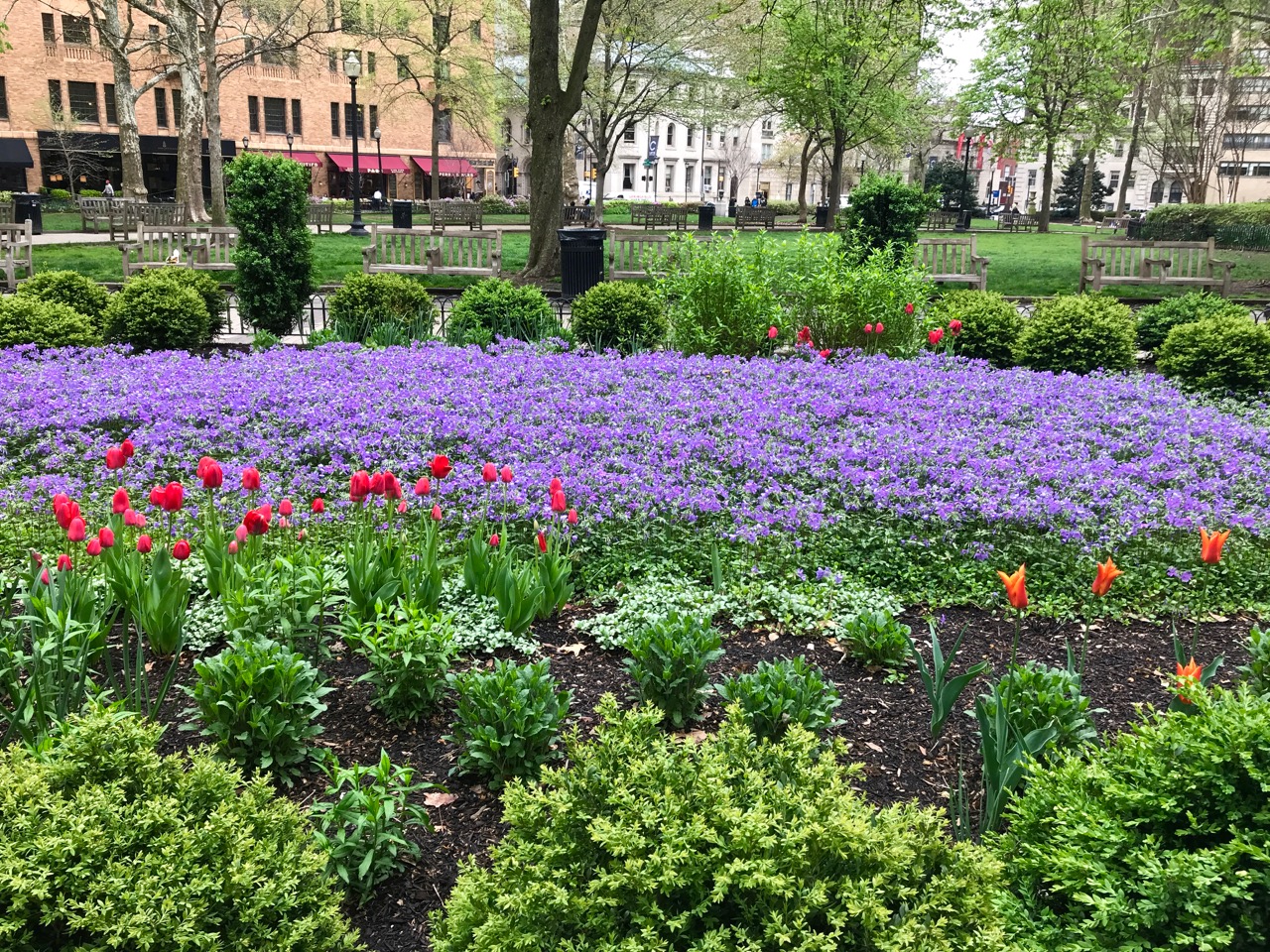
Chapter One: Square Roots
June 4, 2018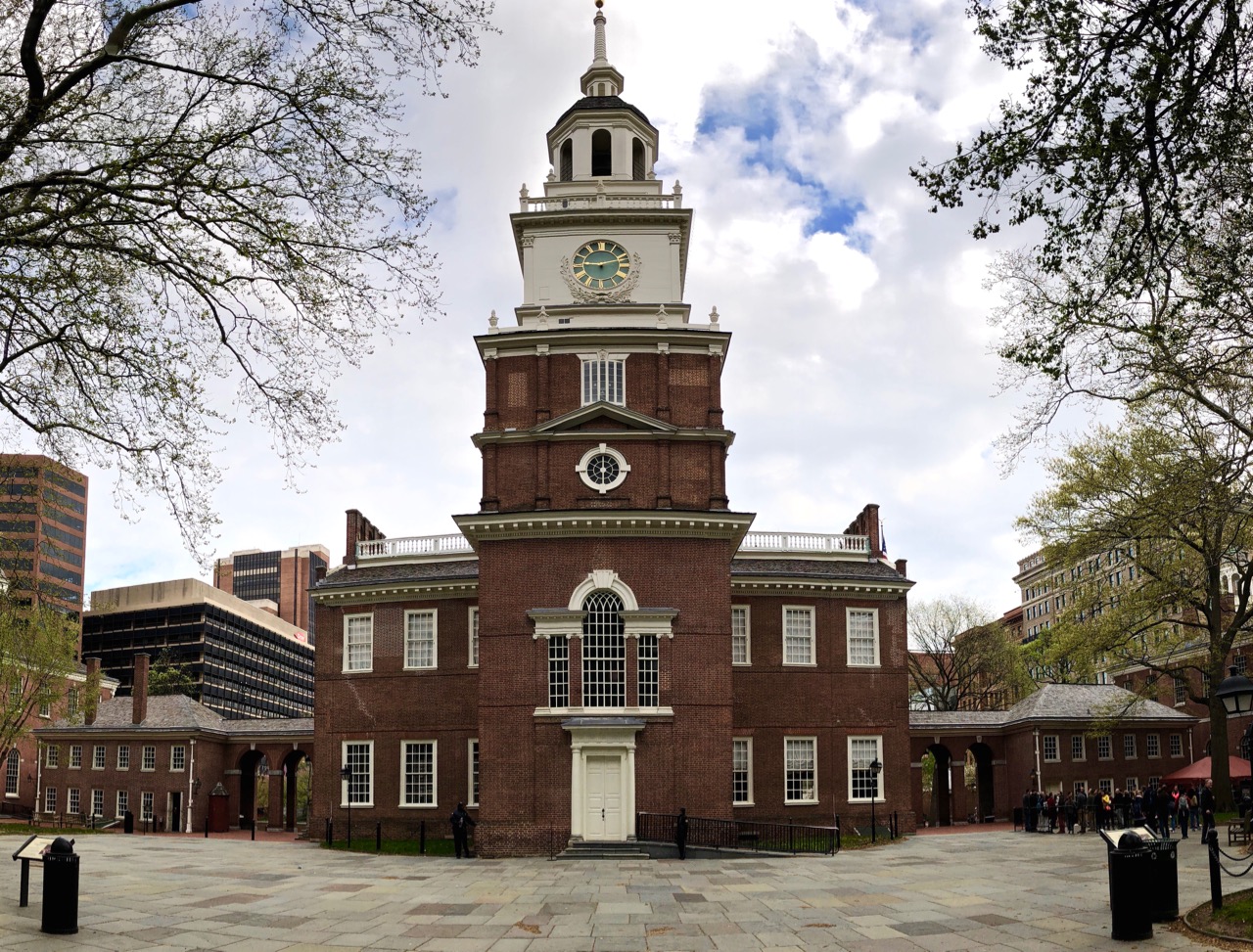
Chapter Three: Philadelphia Freedom
June 12, 2018Mai Tai Tom’s Magical History Tour
Chapter Two: You Say You Want A Revolution
Day Two – Subway Impaired, We Almost Dined There, A Walk Through American History, In Tents, The Streets Of Philadelphia, No Old Mary, Where’s Karen, What’s A Founding Father Like You Doing In A Bank Like This, Washington’s Pew, Don’t Drop The Font, Right Down My Alley, Fire!, Sew What, Ben Deserves Better, I (Don’t) Declare, Did You Write On That Bell, Black Sheep Of The Family, Glorious Gnocchi and Kitchen Aid
We awoke to glorious blue skies, and after inhaling our morning coffee walked to where I thought the subway was located to take us to the vicinity of the Museum of the American Revolution, however (shockingly) I was wrong. Fortunately, a nice couple gazed at four dazed and confused tourists and led us in the right direction (it happened they were headed that way, too).
It seems the ticket machine was broken, but there was a guy collecting money and letting people through. He didn’t have tickets to give us, but after paying him, we headed for the platform, which was one that had trains also traveling in the opposite direction. Another helpful person informed us the subway was under construction, so the lines were going both ways from one platform. Even the locals looked confused by now. Fortunately, we got on the right train.
About 25 minutes early for our 10 a.m. time slot, we scoped out the neighborhood near the museum.
Located close by were a few famous places, such as the First Bank of the United States. It was built in 1795, and the man behind this creation was none other than Secretary of the Treasury, Alexander Hamilton. Rumor has it that after it was constructed, Hamilton said, “Someday they’ll name a musical after me.”
I wish the bank had been open, because it supposedly has a beautiful glass dome.
Across the street stood another striking building. The Merchants Exchange Building was built in the Classical Greek style of architecture, one of the first national American architectural styles utilized by the new country.
The building was constructed in the early 1830s.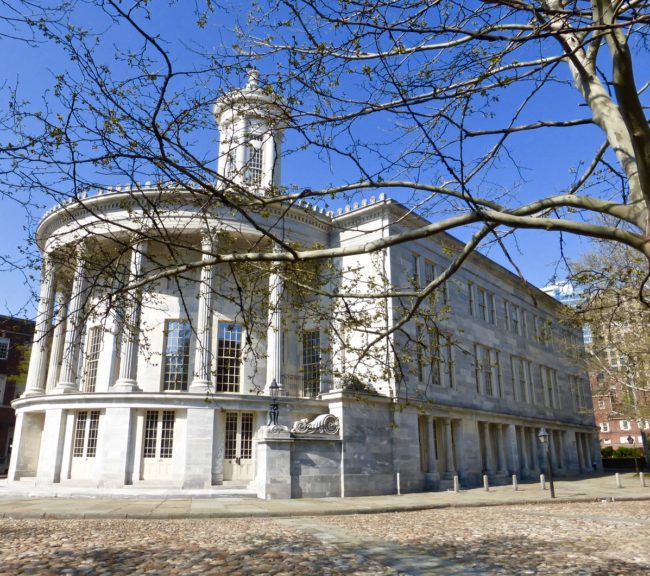 Also in the vicinity stood an historic restaurant we had planned on dining at during our stay. The City Tavern hosted a number of famous people from Paul Revere (who used to take midnight rides here) to Washington, Adams, Jefferson and more. It burned down in the 1830s, but was rebuilt and, in 1976, it opened as a restaurant just in time for the bicentennial.
Also in the vicinity stood an historic restaurant we had planned on dining at during our stay. The City Tavern hosted a number of famous people from Paul Revere (who used to take midnight rides here) to Washington, Adams, Jefferson and more. It burned down in the 1830s, but was rebuilt and, in 1976, it opened as a restaurant just in time for the bicentennial.
By now, it was about 9:50, and we were allowed to enter the museum a little early.
We viewed an interesting 15-minute movie and then started our self-guided tour by climbing the graceful curving staircase.
There are no audioguides, but this museum (like many now do) contains a number of interactive exhibits with good descriptions dispersed throughout. You can download an app on iTunes to explore the museum.
It’s a well-thought out facility. Some of the highlights included a recreation of America’s first Liberty Tree. Liberty Trees became spots to gather while discussing and debating revolting against the British empire. This replica weighs a ton … literally.
I (and anyone else visiting) can touch a piece of the Annapolis Liberty Tree.
You can’t miss the “Speakers Chair” from the First Continental Congress. This chair survived the 1777-1778 occupation of Philadelphia by the British.
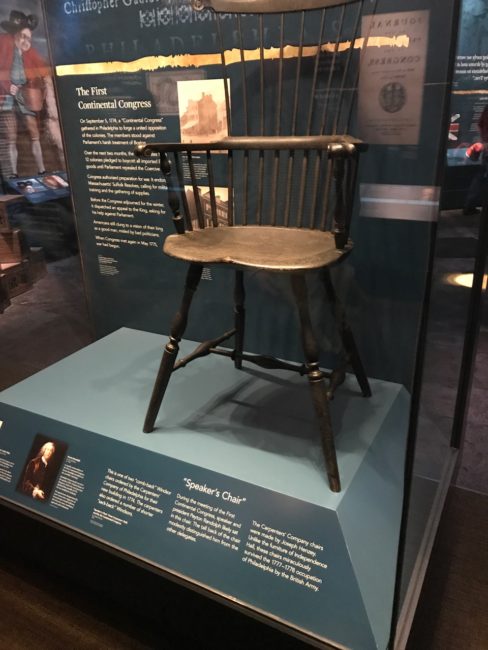 I was going to ask if this instrument of war was Pachelbel’s Cannon, but everyone looked very serious, so I used my Common Sense, which can sometimes be a Paine.
I was going to ask if this instrument of war was Pachelbel’s Cannon, but everyone looked very serious, so I used my Common Sense, which can sometimes be a Paine.
In one room, the doors are closed so you can experience what it was like to be in the middle of the battle Of Brandywine. If you didn’t get killed in these battles, odds are you’d go deaf.
As we would find out at many museums (and presidential homes), the issues of slavery and the plight of Native Americans were much more out in front than they had been in prior years. (Museums obviously highlight our Founding Fathers virtues, but they also now focus on their flaws and inner conflicts, as they should. This museum was no exception.)
We spent two hours taking the chronological journey from the roots of Revolution through the last years of the conflict.
It was quite a war, by George.
The museum opened in 2017 and contains thousands of items, among them The March To Valley Forge, painted by Philadelphia artist William Trego. If you thought Valley Forge was tough, how about painting this piece without the aid of being able to move your fingers.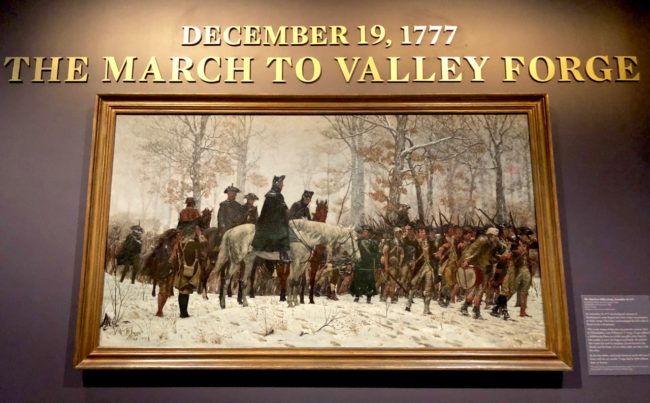 Trego contracted a debilitating illness as a child and painted this work by “gripping a brush between the thumb and forefinger of one hand while moving it with the other.”
Trego contracted a debilitating illness as a child and painted this work by “gripping a brush between the thumb and forefinger of one hand while moving it with the other.”
We forged ahead. The museum saves the best for last. After exiting the exhibits, we waited for a few minutes for the doors to open to a small theater. There we watched a surprisingly moving film (narrated by the great Peter Coyote … he should narrate everything) about George Washington’s Headquarters (War) Tent utilized during the Revolutionary War.
The film traced the tent’s incredible history. It was inherited by Washington’s granddaughter who was married to Robert E. Lee. “Lee’s enslaved housekeeper kept it safe when Union soldiers ransacked Arlington House during the Civil War.” After the Civil War it was sold to raise money for the Confederate Widows Fund. When the movie concluded, the curtains parted to show the original tent, the “crown jewel” of the collection, which is on permanent display. No photos are allowed. (Photo courtesy of the Museum of the American Revolution.)
Before going back downstairs, we gazed at another large painting, The Siege of Yorktown. Such figures as Washington, French General Rochambeau (gesturing) and General Lafayette stand in front of the striped officer’s tent.
A little after noon, we were on the streets of Philadelphia in search of a couple of churches. Along the way we passed a recreation of an 18th-century formal garden.
The first church we ducked into, Saint Joseph’s Roman Catholic Church dates from 1838. We were only there for a few minutes when services started.
That was a few minutes more than we got at Old St. Mary’s Church, where the first public religious commemoration of the Declaration was held in 1779. I read that “the marble pieta by French sculptor Boucher at the back of the church and two stories of brilliant stained glass windows create a mood of quiet grandeur.” I’ll never know … it was closed (foreshadowing alert). Hopefully it opened when Pope Francis was in town.
We did go around the side and back and walked through Old St. Mary’s Cemetery. Established in 1759, it holds the remains of many prominent Philadelphians and historical figures. It also contained graves of servicemen killed in many wars.
It was a short walk to Carpenters Hall. I told our group that being at Carpenters Hall reminded me that “We’ve Only Just Begun this historical journey, which makes it seems like Yesterday Once More.” I was going to add that I felt On Top of the World, but quickly realized this was our first full day, so I’d better tone it down.
This 1773 building was a guildhall for, not surprisingly, carpenters. Although there’s not really much to see here now, many important meetings in our country’s infancy were held here, including the first Continental Congress in 1774. A helpful person handed us a map after circling where everything in this area could be located and also gave us a heads up on a nearby attraction. Fortunately a subway would not be needed for transportation.
Located just across the street from Carpenters Hall stood The Second Bank of the United States. The bank didn’t last long (1816 – 1836). it seems President Andrew Jackson had an anti-bank platform, calling this bank a “hydra of corruption.” However, the building’s Greek Revival architecture has been called, “the finest in the United States.”
Thanks to our friend at Carpenters Hall, we scoped out the interior which houses the Portrait Gallery. A veritable “Who’s Who” of portraits and statues of American history icons and foreign dignitaries are interspersed among the Ionic columns. The works of Charles Wilson Peale are very prominent, including his portraits of Adams, Jefferson and Secretary of War Henry Knox.
William Rush’s giant 1814 statue of George Washington is hard to miss.
Of course, in Philadelphia, Ben Franklin is ever-present. The Portrait Gallery offered a great glimpse into the historical figures presented. The descriptions of the persons and their impact on history added to the experience.
We enjoyed this quick (and free) diversion, but realized we hadn’t eaten yet today. Up ahead we passed The Bourse and wandered over to check out its vendors, only to discover it was closed for renovation.
Fortunately, nearby on Market Street we plopped down at the Luna Café for a quick bite. The lunch included a Sweet Potato and Quinoa Bowl, a Southwestern Bowl (arugula, black beans, quinoa, pico de gallo and egg) and Kim’s first Caesar salad of the trip. I enjoyed a grilled cheese sandwich and tomato soup (since it was an 8th grade field trip, this seemed like the logical choice). We paid cash for lunch, which was fortuitous as we found out later this is a cash only establishment.
No rest for the weary, we were soon back out exploring Philly. Next stop: Christ Church. Christ Church (an Episcopal church) was constructed in the 1700s and follows the tradition of Christopher Wren, who seemingly was the architect for every London church ever constructed. For 56 years, the steeple of Christ Church was the tallest structure in North America.
Talking with a gentleman before entering the church, he told us that amazingly there have only been a total of 10 rectors since the church was founded. The current rector happens to have been at All Saints Church in Pasadena. Here is a link to that gorgeous church that I wrote last year (All Saints Church). We stepped inside.
Christ Church, dubbed “The Nation’s Church” at one time, hosted members of the Continental Congress during the American Revolution. Presidents George Washington and John Adams came here. Early members also included Benjamin and Deborah Franklin, Betsy Ross and several signers of the Constitution and Declaration of Independence, including Robert Morris, Benjamin Rush and Francis Hopkinson.
Mary sat in George Washington’s pew. No, I did not make a joke.
Stones, memorials and plaques abound.
While we were there, some workers were taking extra precautions as they were moving a font. It turns out this was not any font, but the one where William Penn was baptized. Estimates are this font could be as old as 500 – 600 years. You could feel the pressure on the workers, so we moseyed on to our next destination before something dreadful occurred.
Our following stop could be skipped, in my opinion (of course, we don’t skip much). Yes, Elfreth’s Alley is old, so old that it qualifies as the “oldest inhabited street in America.” It is lined with small, two story homes.
If in the area, it only takes a few minutes to walk it, but I would not go out of your way if pressed for time.
Nearby is another attraction the lady at Carpenters Hall told us about, The Fireman’s Hall Museum. This 1902 restored firehouse contains displays of fire fighting equipment and old firetrucks. Tracy said, “This would be an Elevator List attraction unless you are a fireman.” She’s tough! I did think the old firetrucks were cool, however.
Next on our marathon Saturday was going to be Christ Church Burial Ground, but along the way I noticed people congregated on a patio outside a house. I thought someone was trying to flag me down, and then I realized why … this was the house of Betsy Ross (well, maybe not). I ran across the street, but then remembered what local people had told me, which was basically, “Don’t go.” Ross didn’t really live here, and the story of her flag creating is more myth than reality. Plus, we had a famous Founding Father to visit.
Christ Church Burial Ground, which I found out earlier wasn’t at Christ Church, holds the remains of the world’s most famous kite flyer, Benjamin Franklin.
I thought the “Food for Worms” quote on his plaque displayed his sense of humor.
I later read, “In 1858, Franklin’s descendants requested that an opening be placed in the brick wall surrounding the cemetery so the public could see Franklin’s grave day or night. The installation of a metal fence made it much easier for Franklin’s many admirers to toss a penny onto his family plot in honor of his famous words, “A penny saved is a penny earned’.” In other words, you can save the three bucks it costs to go here by standing outside the fence.
Four other signers of the Declaration of Independence are buried at Christ Church Burial Ground; Joseph Hewes, Francis Hopkinson, George Ross and Dr. Benjamin Rush.
This is a burial ground in need of some restoration. I think our Founding Fathers deserve a little better.
Nearby, I walked into a little courtyard to see whose statue was standing there. The man’s story on the plaque was a compelling one. Uriah Phillips Levy became the first Jewish U.S.Navy Commodore. “He was court-martialed six times and killed a man in a duel, all incidents related to rampant anti-Semitism.” Dismissed twice by the Navy, both James Monroe and John Tyler reinstated him, and Levy went on to be appointed by Abraham Lincoln to head the Navy Court Martial Board during the Civil War. A World War II destroyer escort was named after him.
We made a quick stop at the Independence Hall Visitor Center to scope out how to pick up our tickets for the Independence Hall tour I had ordered online long before we left. While there, Kim and I channeled our 8th grade humor, and he took a picture of me faking writing on the Liberty Bell (see our Caves of France escapade story on how that all came about).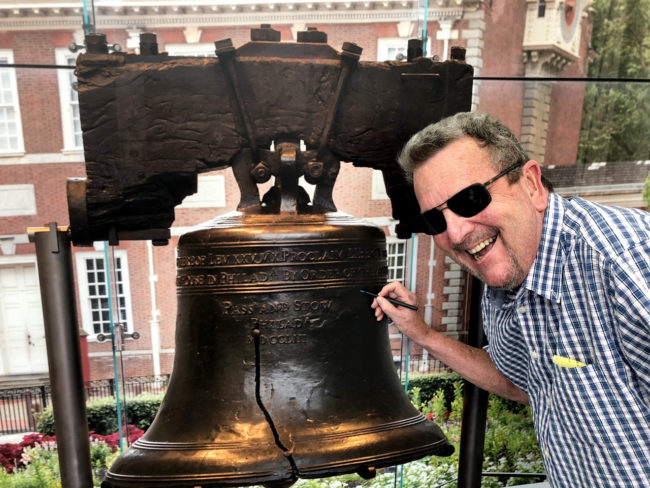 The line for the nearby “real” Liberty Bell stretched all the way to Pittsburgh, so we declined.
The line for the nearby “real” Liberty Bell stretched all the way to Pittsburgh, so we declined.
Before heading for home, we thought we might go by and see the nearby Declaration House, where Thomas Jefferson, in search of a quiet room away from city noise, drafted the Declaration of Independence in less than three weeks in the late spring of 1776.
I had read that hours are weird here, and even when it says it’s open, it’s not. It wasn’t. One person came by and said, “I’ve tried to go here many times … it’s never been open when I’ve come around.”
Back at our trinity, we could have rested … but not us. Whenever we travel, Tracy and I always try to find a convenient Irish pub for Kim and Mary, The Black Sheep was very convenient, located less than a block from us. The warm afternoon meant it was Guinness time!
Somehow we managed a short (very short) nap before freshening up for dinner. I had booked Ristorante Pesto in South Philly nearly two months previous to departing. Yes, I really wanted to go here.
Our evening and meal turned out so good, I wrote a separate review of our night at Ristorante Pesto.
All the food was delicious (my Gorgonzola gnocchi was heavenly) …
… the service impeccable and Tracy and Mary even wangled their way into the kitchen to chat with the owner/chef, Giovanni. His Cavatelli (which Tracy ordered … and loved) won Rachael Ray’s Little Italy Pasta Showdown. The meal turned out to be one of my favorite dinners … ever!
By the time we got back to our place it was late, well at least for three old people and a woman married to an old guy.
We had to be up early tomorrow for the Independence Hall tour. Our day would include more historical sights, an encounter with some over-zealous tourists, lunch at a train terminal and a merveilleux dîner français with a group of friendly travel board members. The 21st-century art of ride shares were also put to the test a couple of times during the day. We are loving Philly!
Next – Chapter Three: Philadelphia Freedom
Independence Day, Act Of Congress; Tiptoe Through The Tulips, Let Freedom Ring, Phake Philly Phanatic, Skuggs The Squrrel, Go Fly A Kite, Stop/Start The Presses, Take A Ride On The Reading, Akia In A Kia, Not Exactly Hamilton, I’ve Seen This Movie Before, Afternoon Constitutional, Hanging With The Founders, We Need Uber To Give Us A Lift To Lyft and Meeting The Real Philly Phanatics

